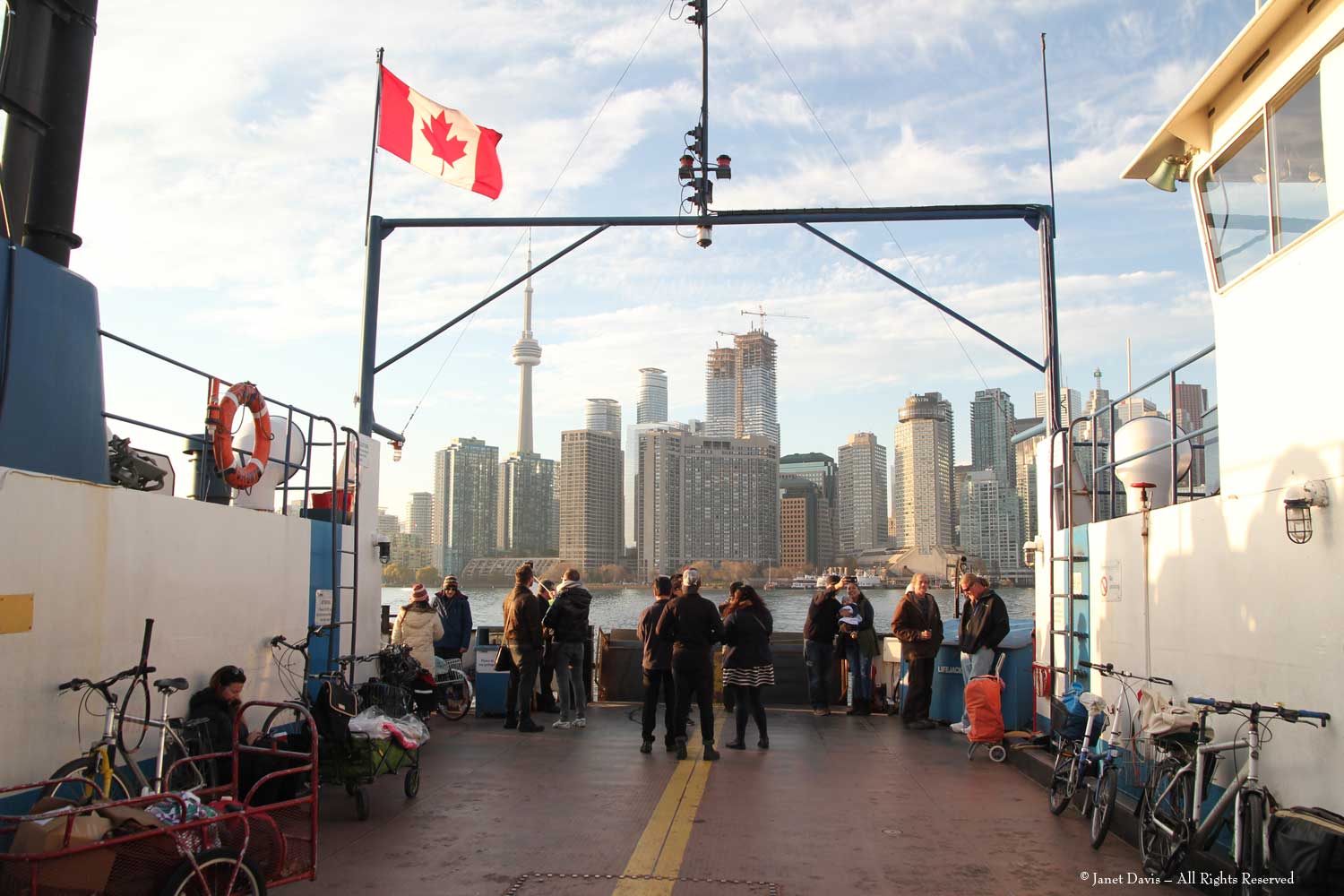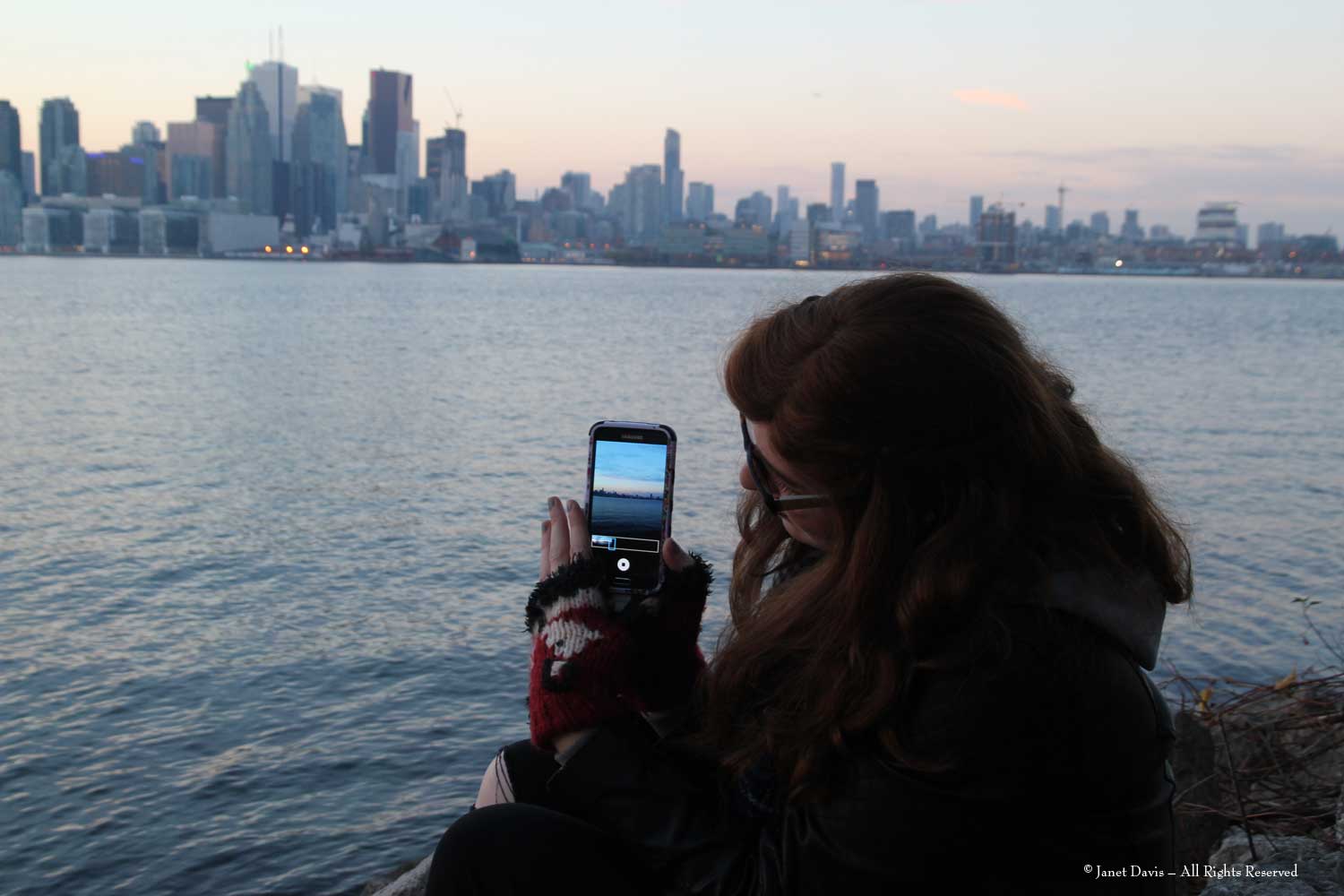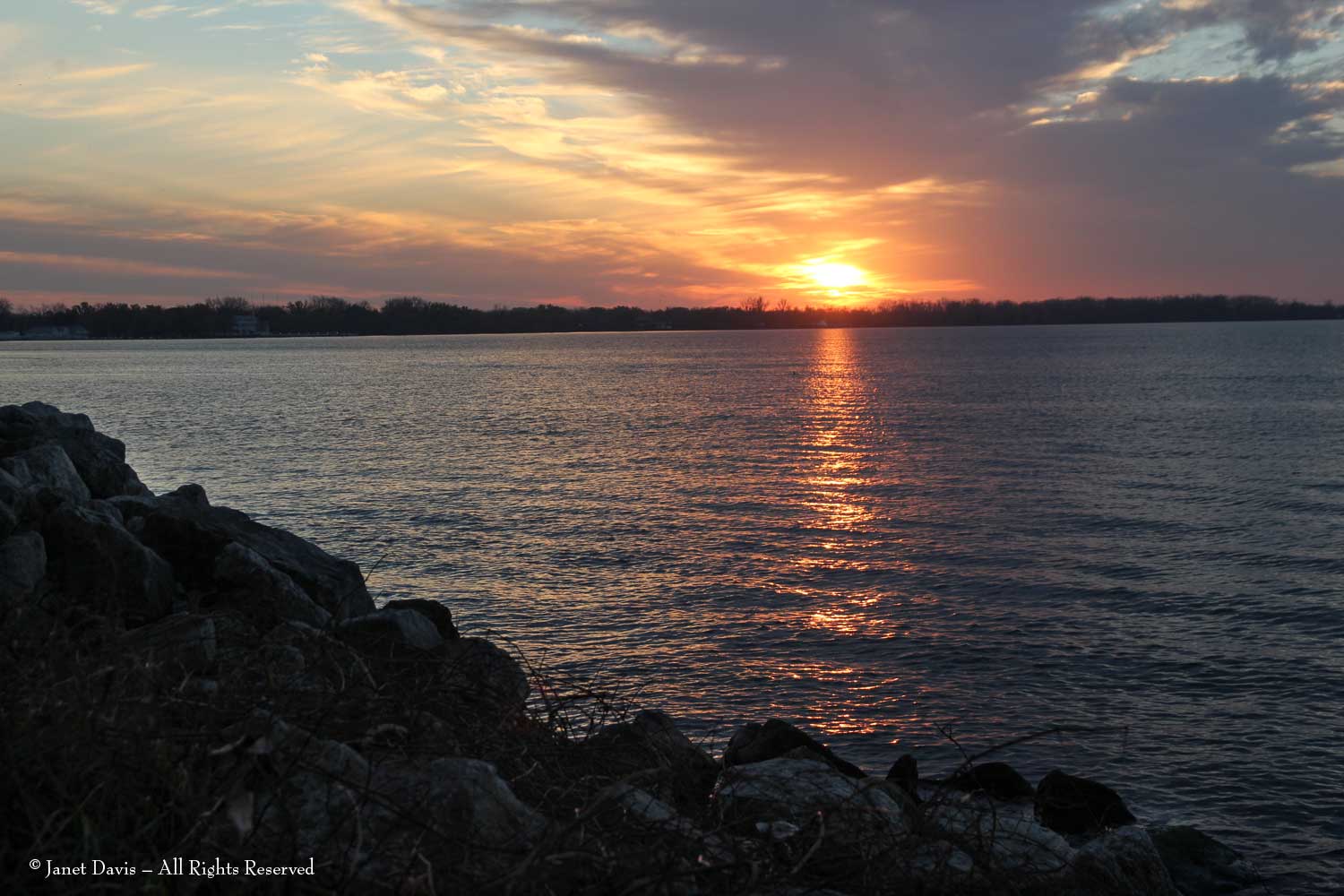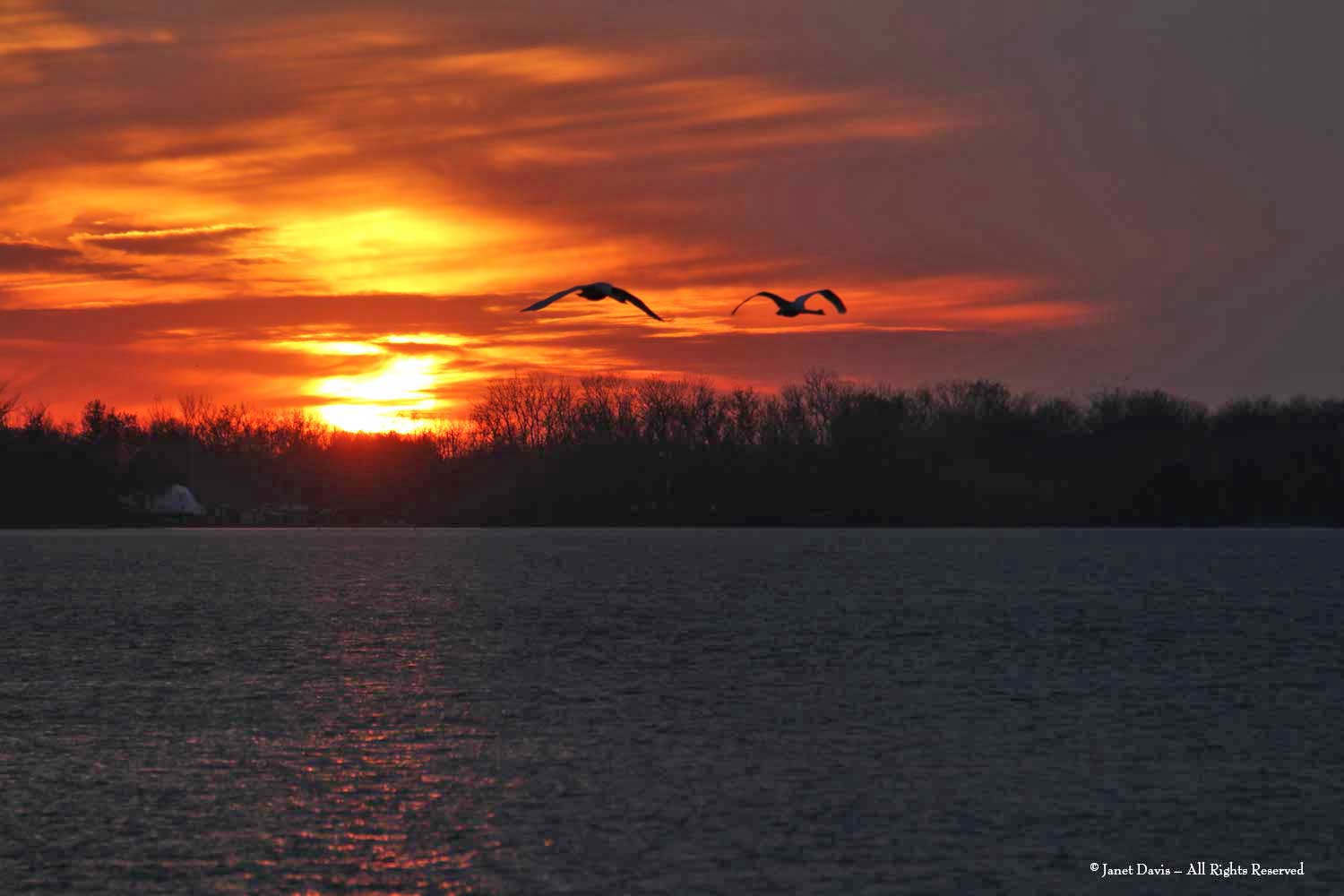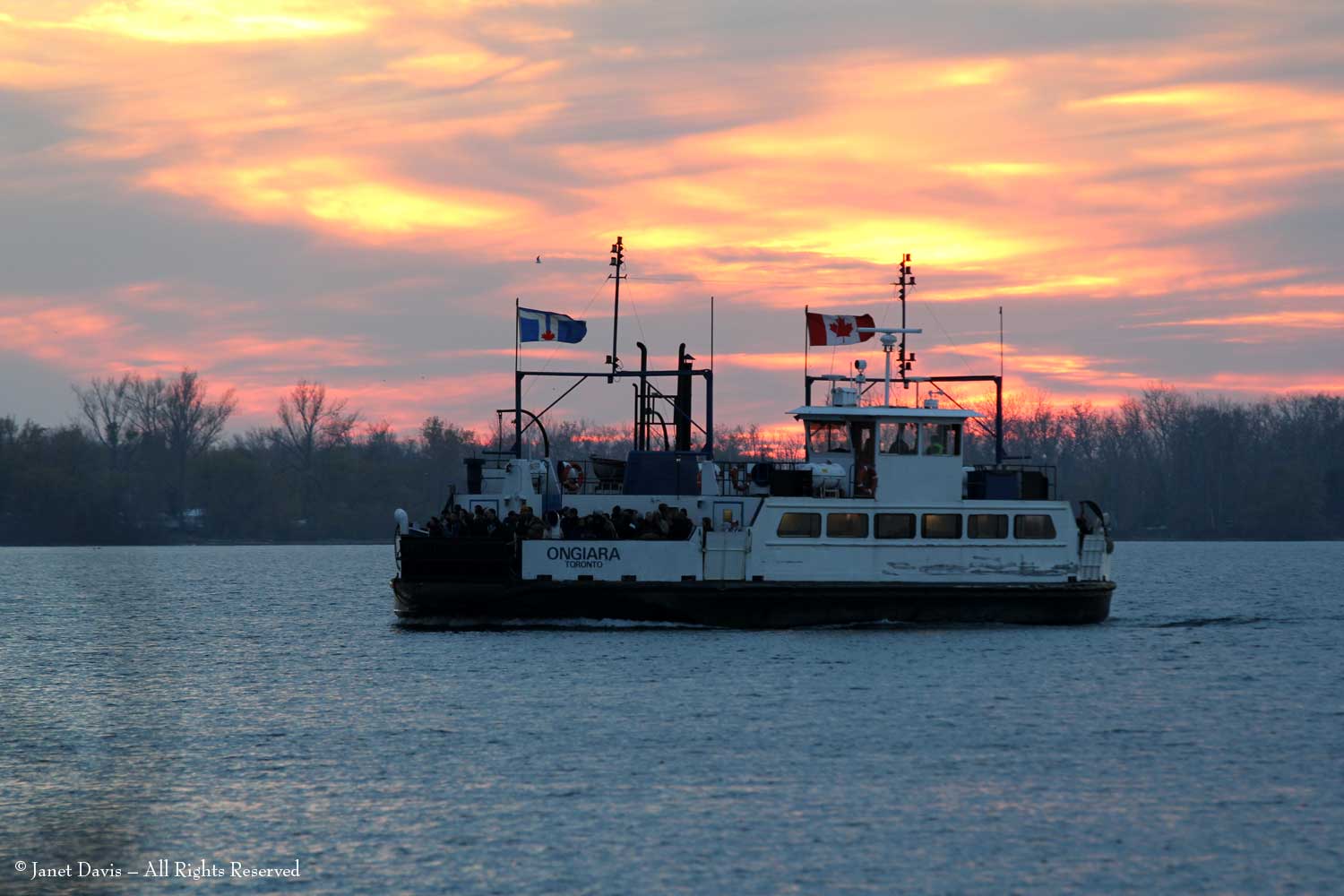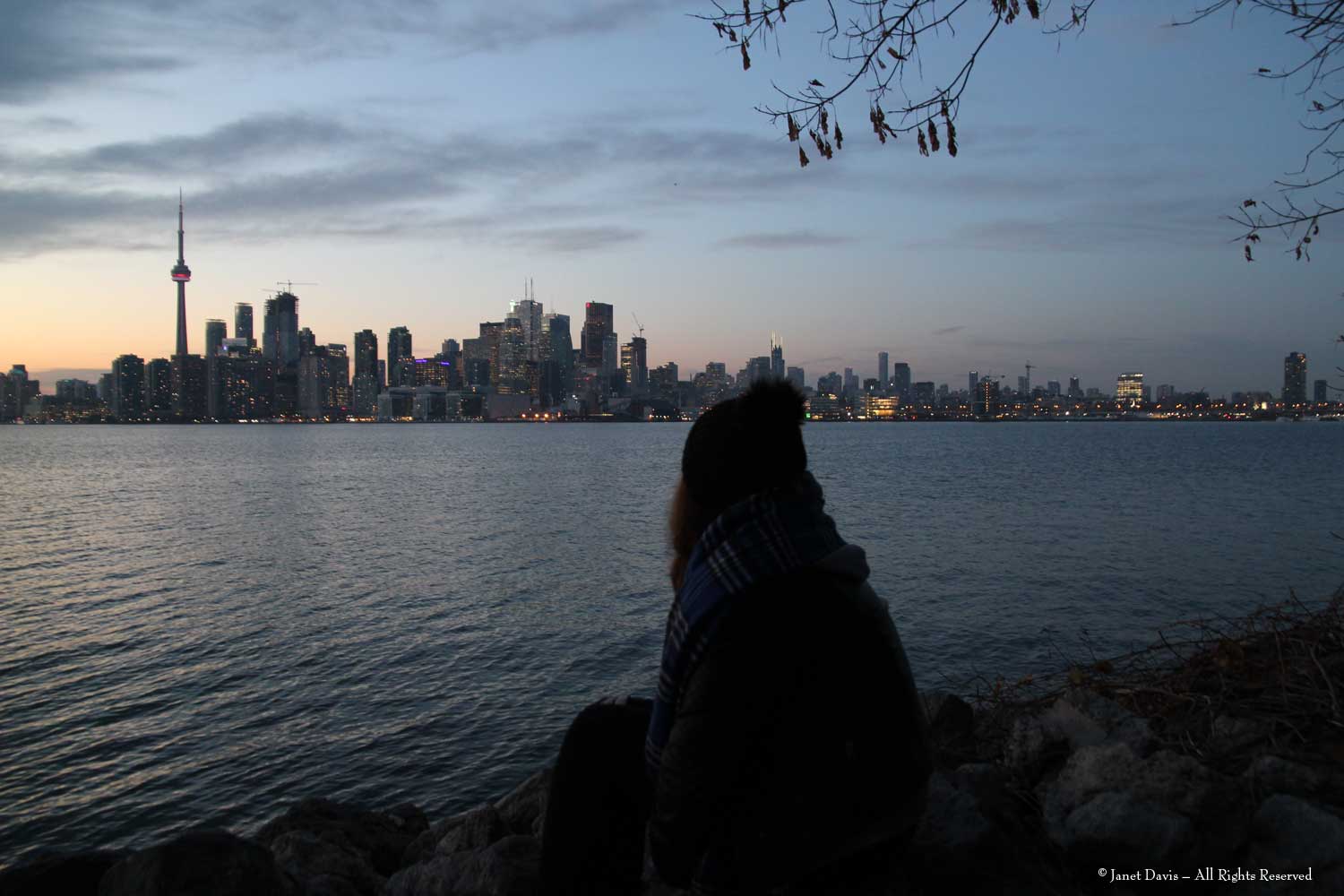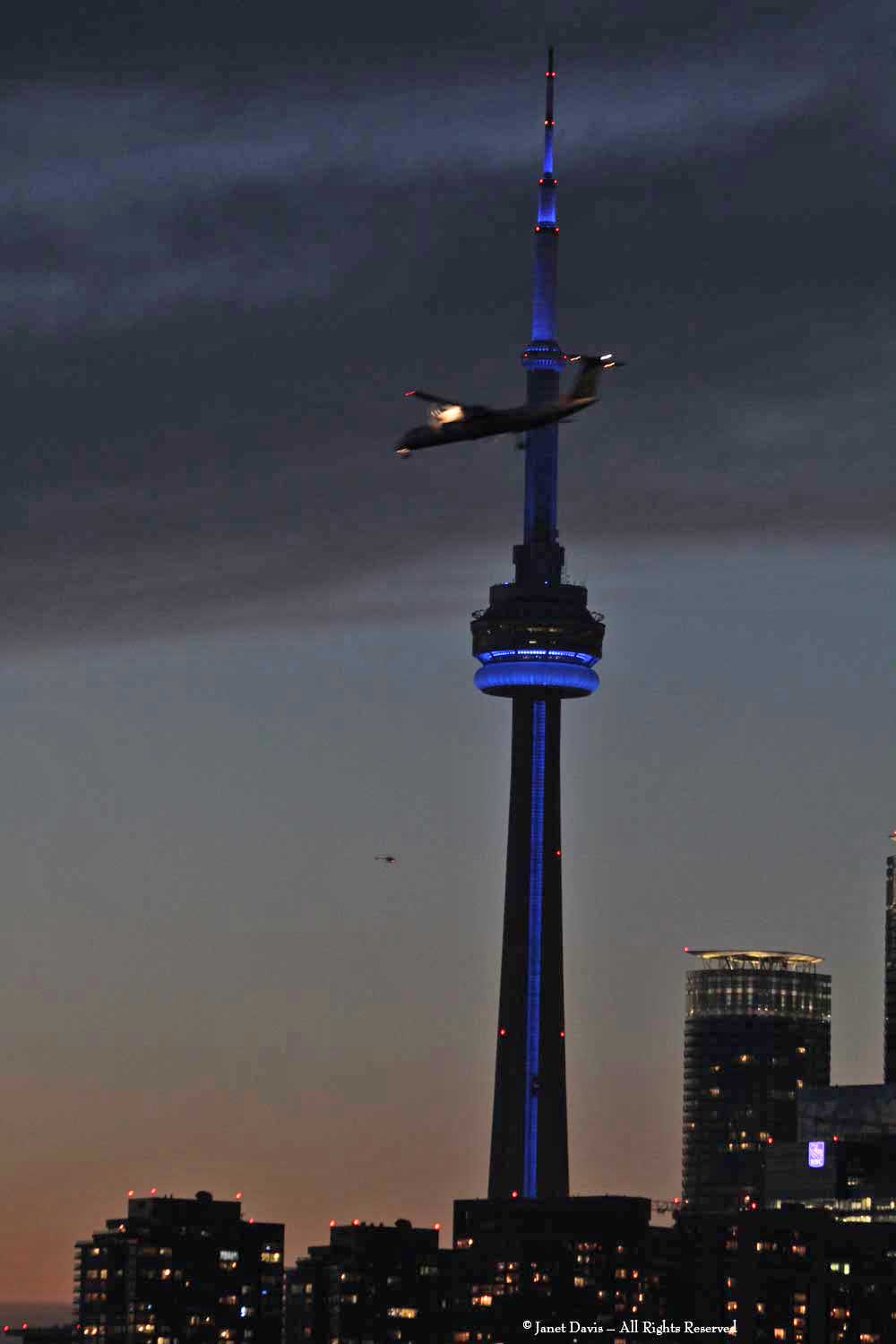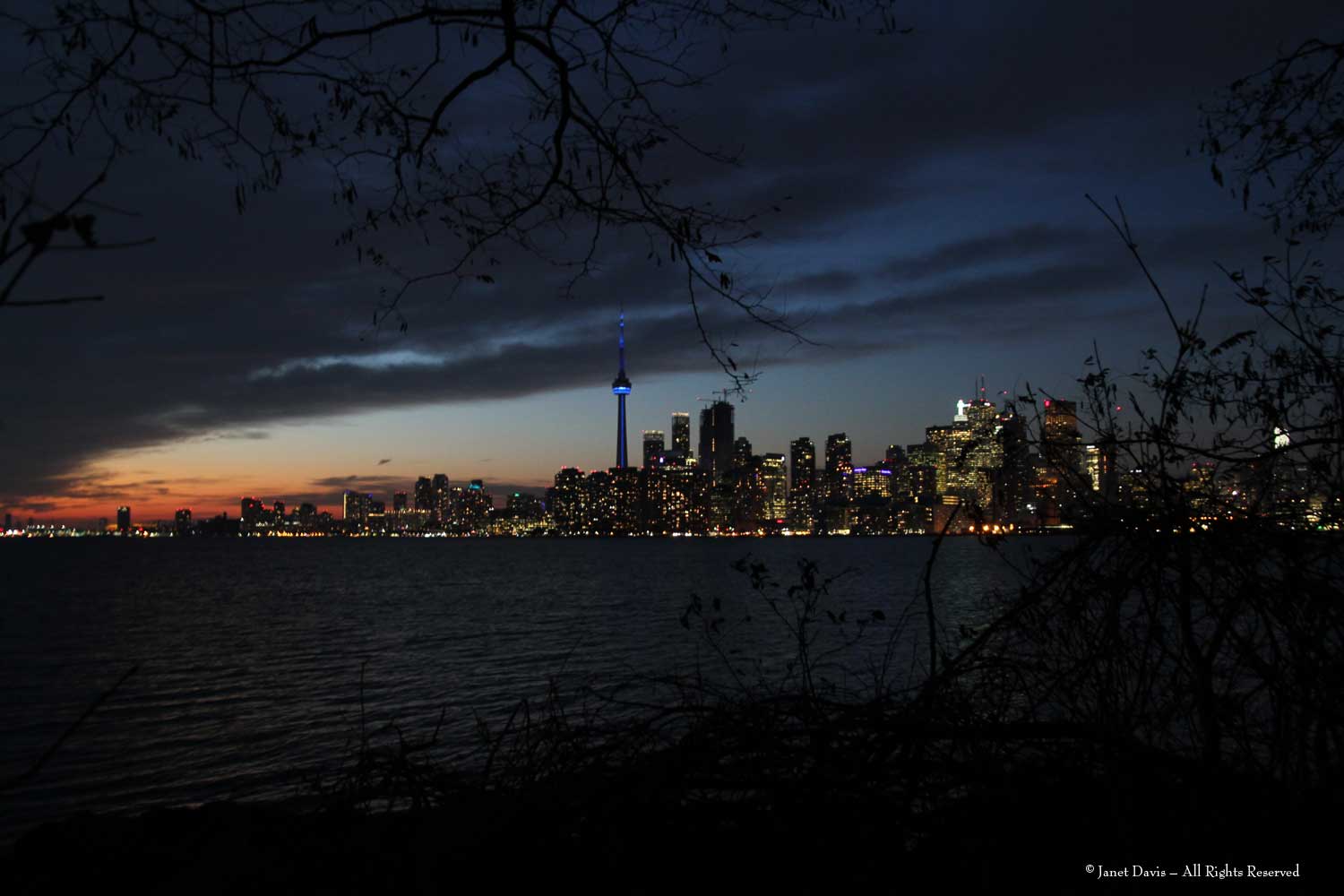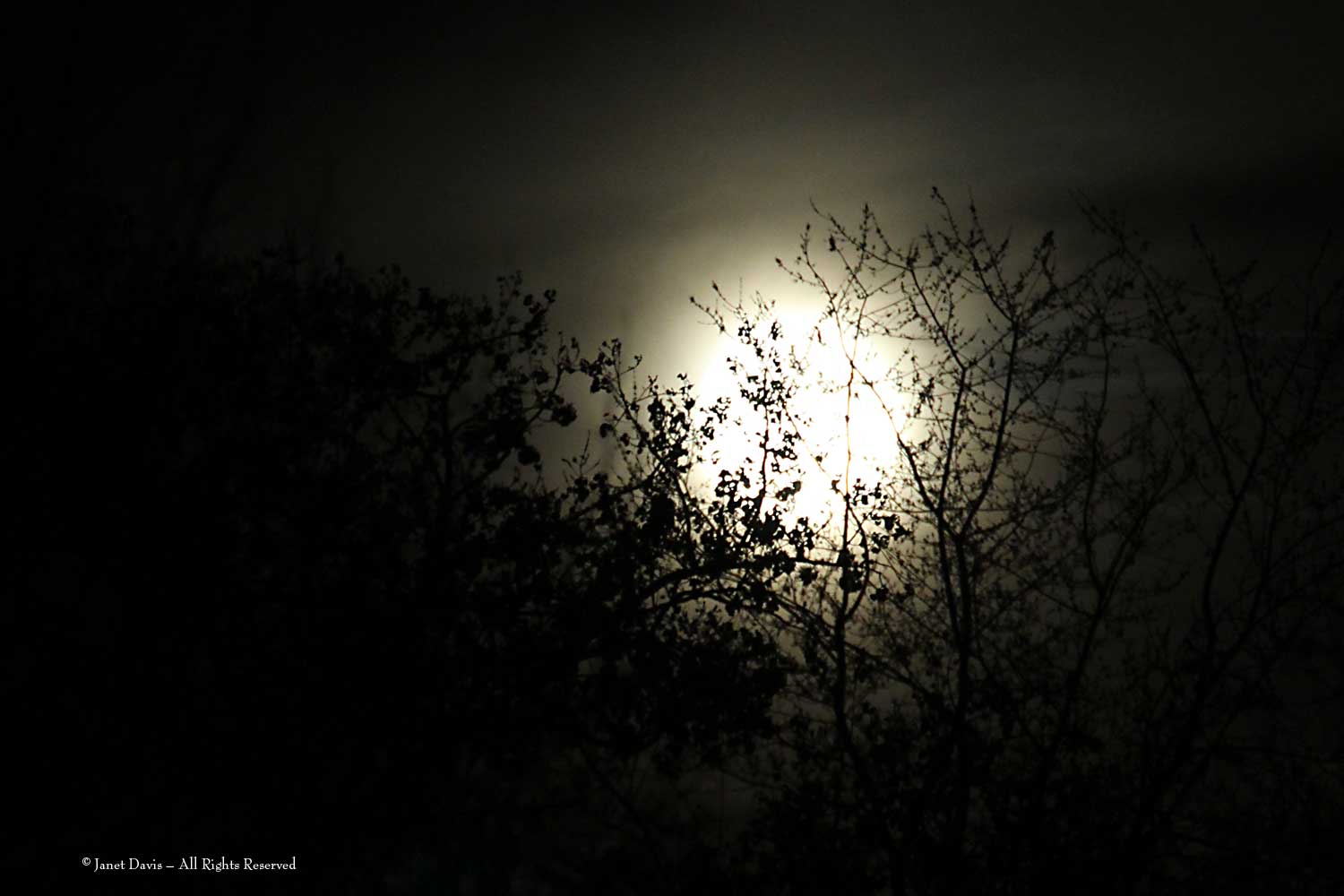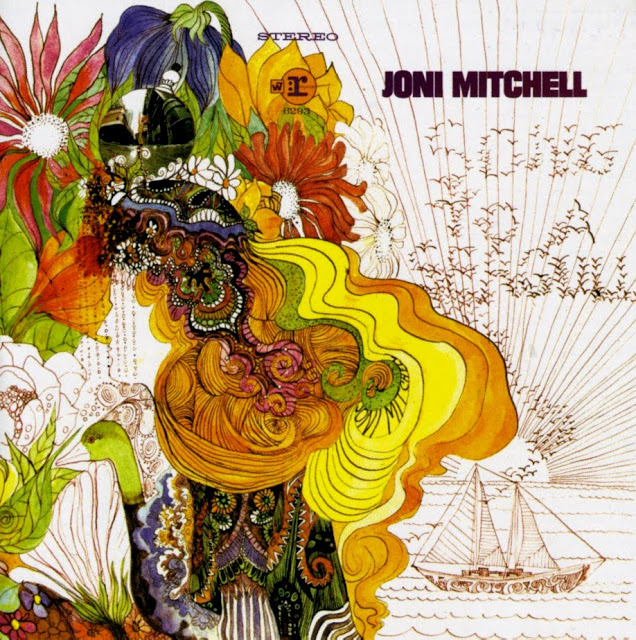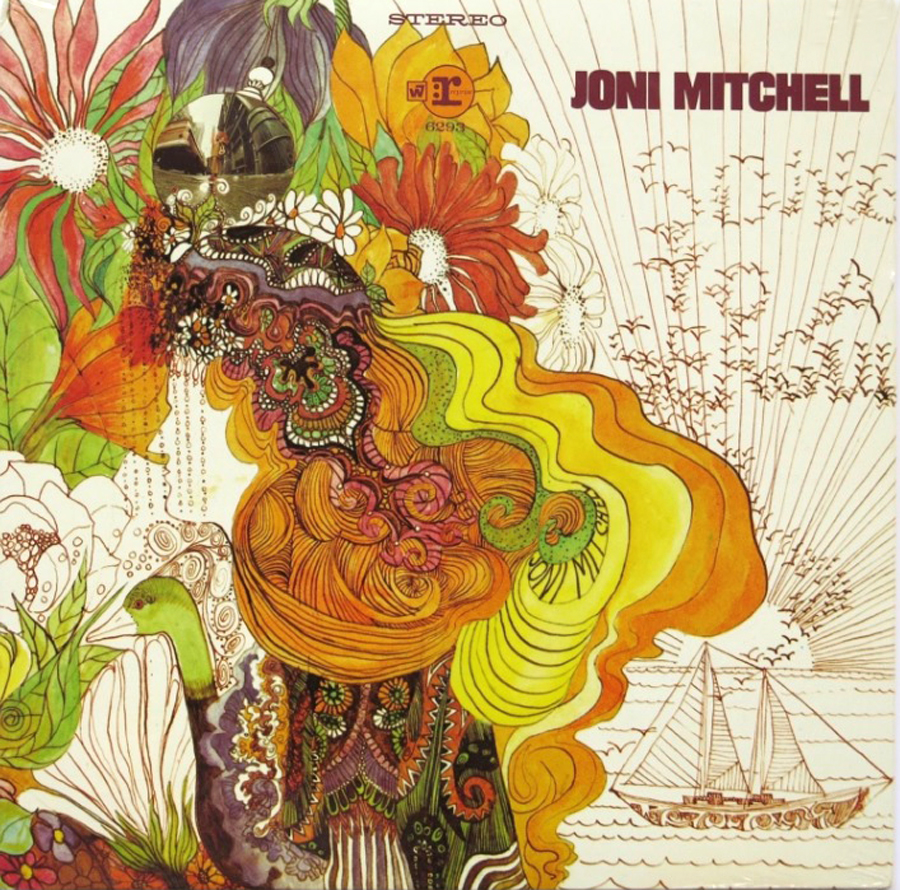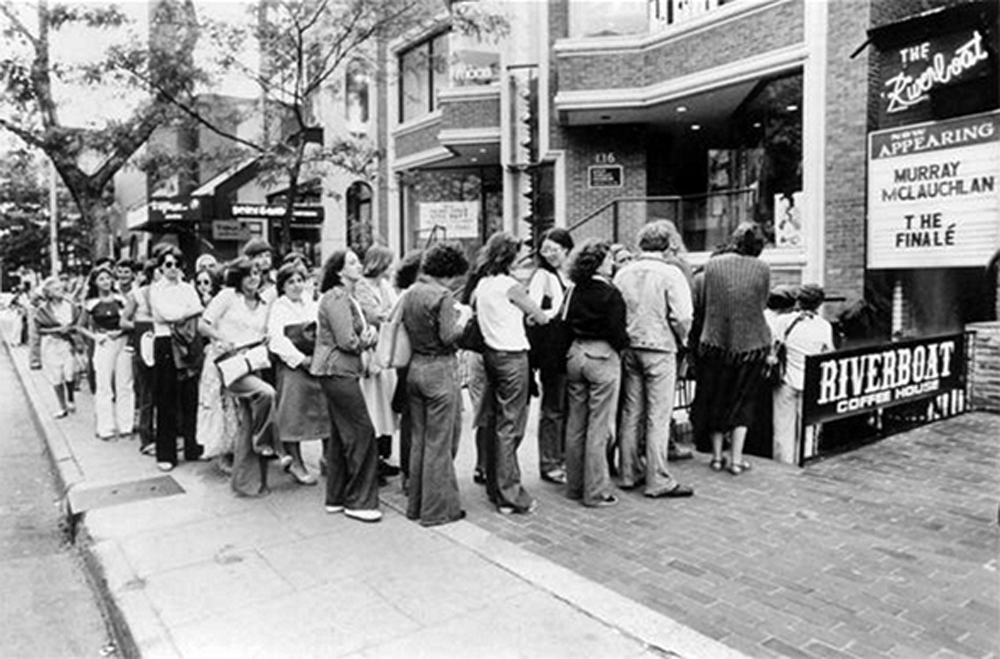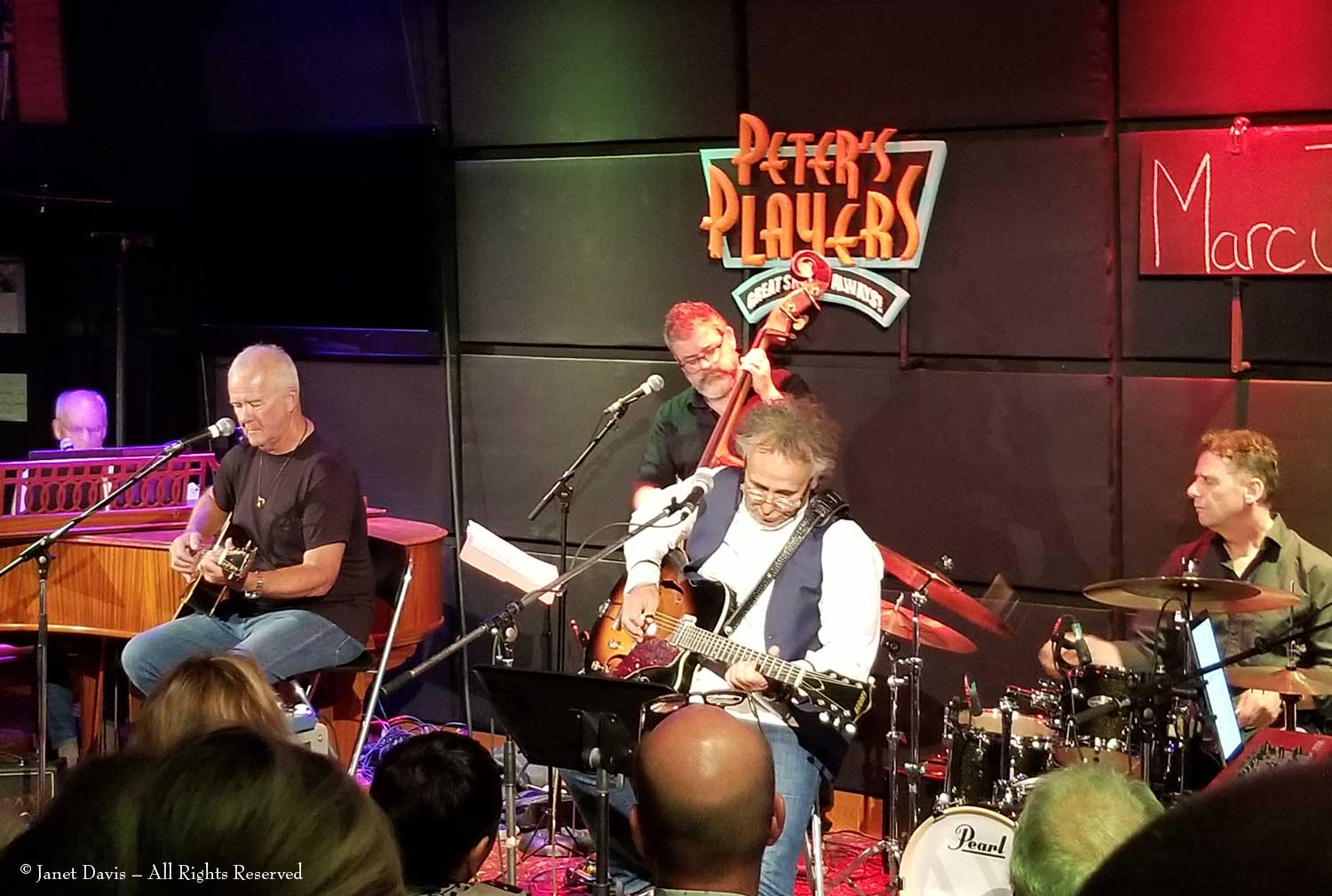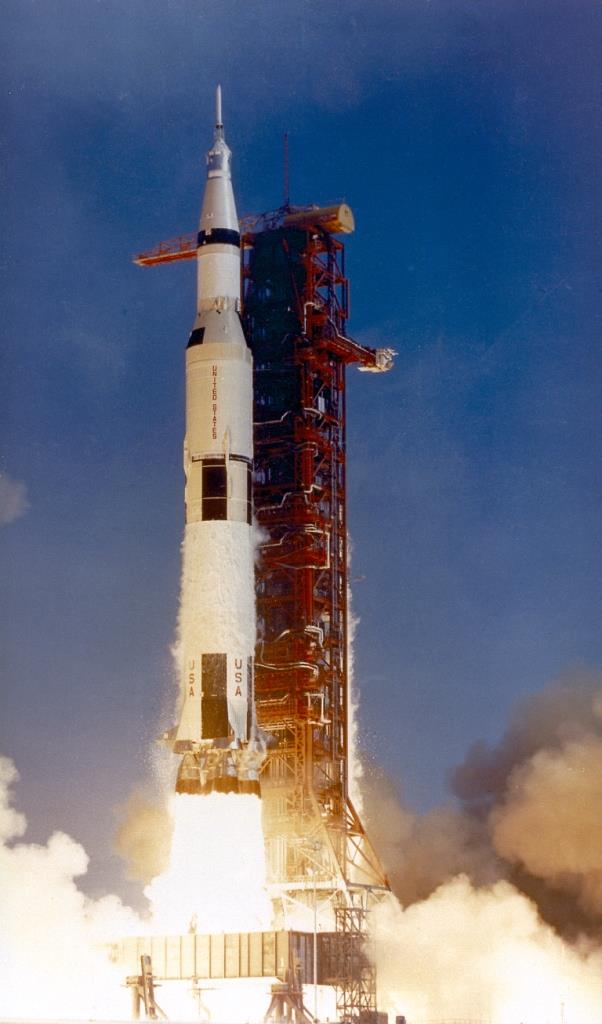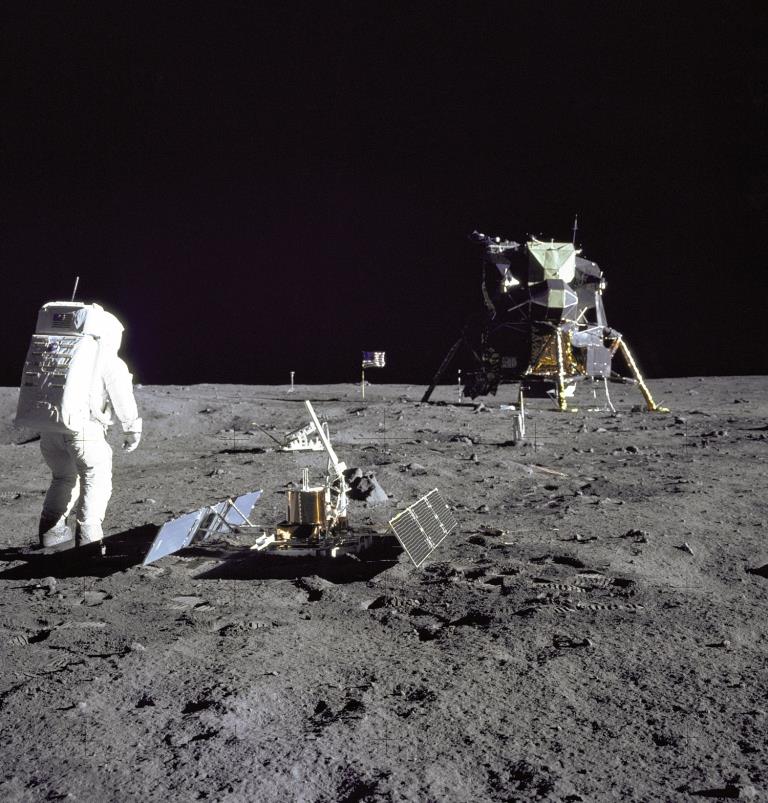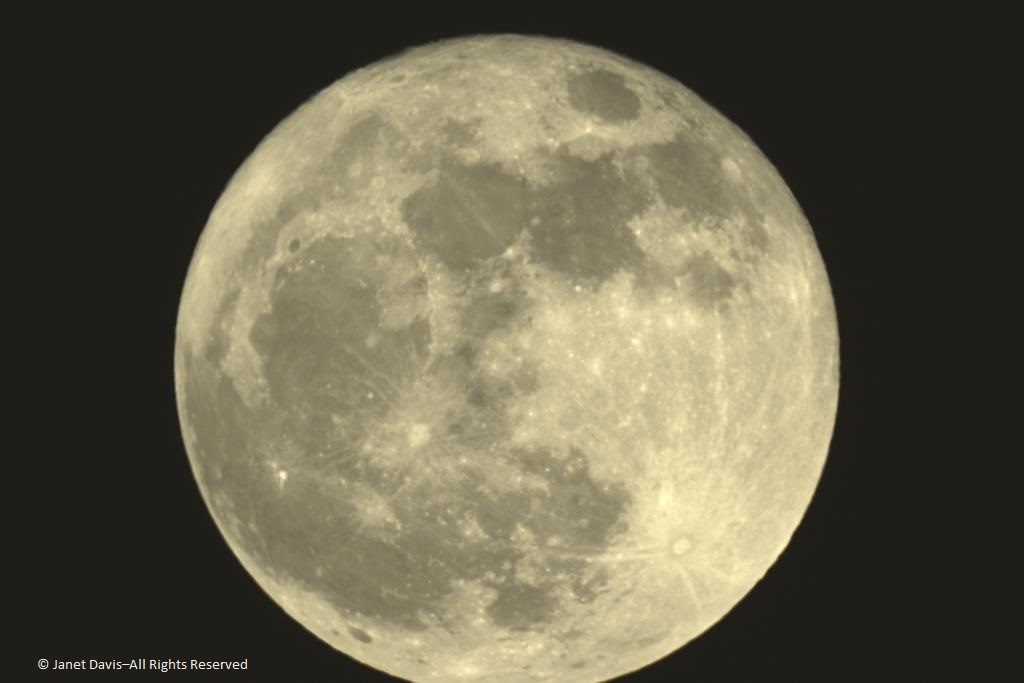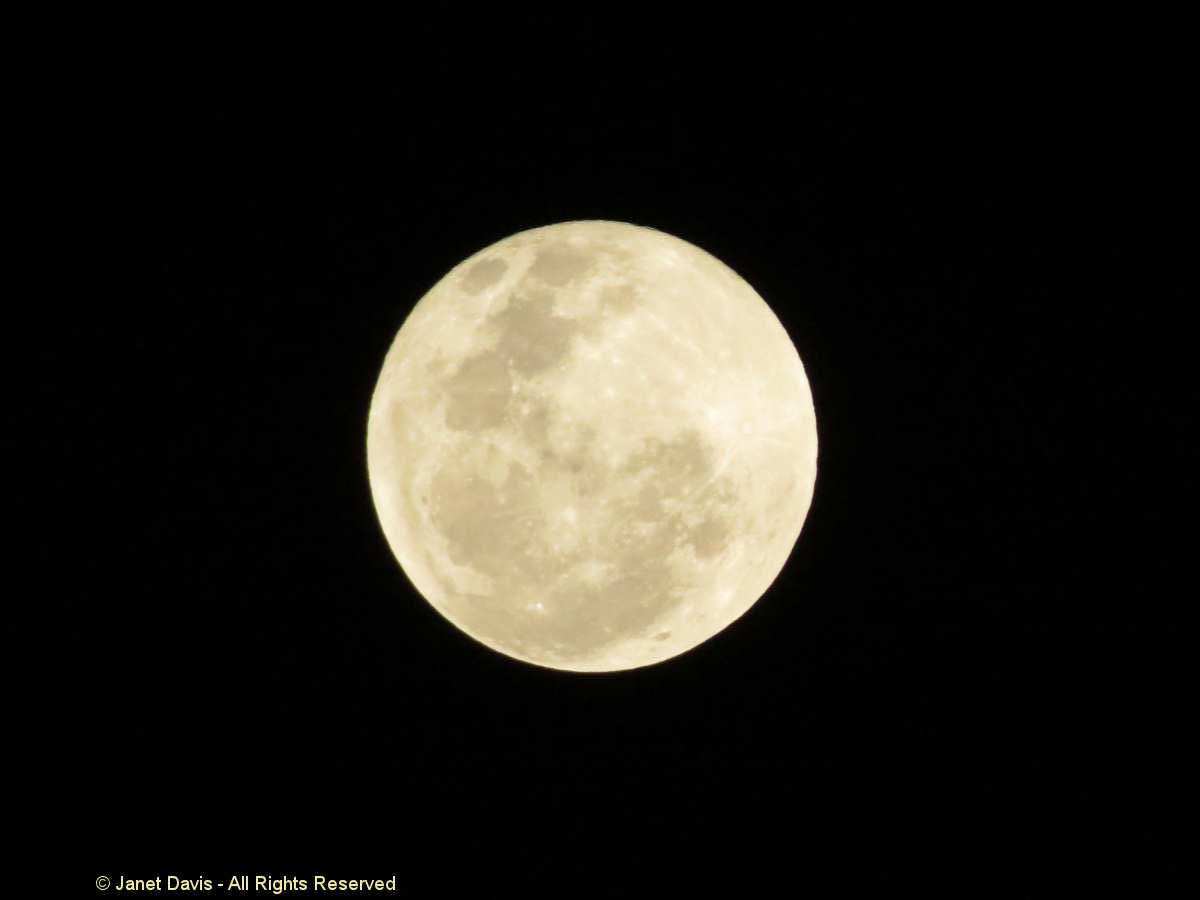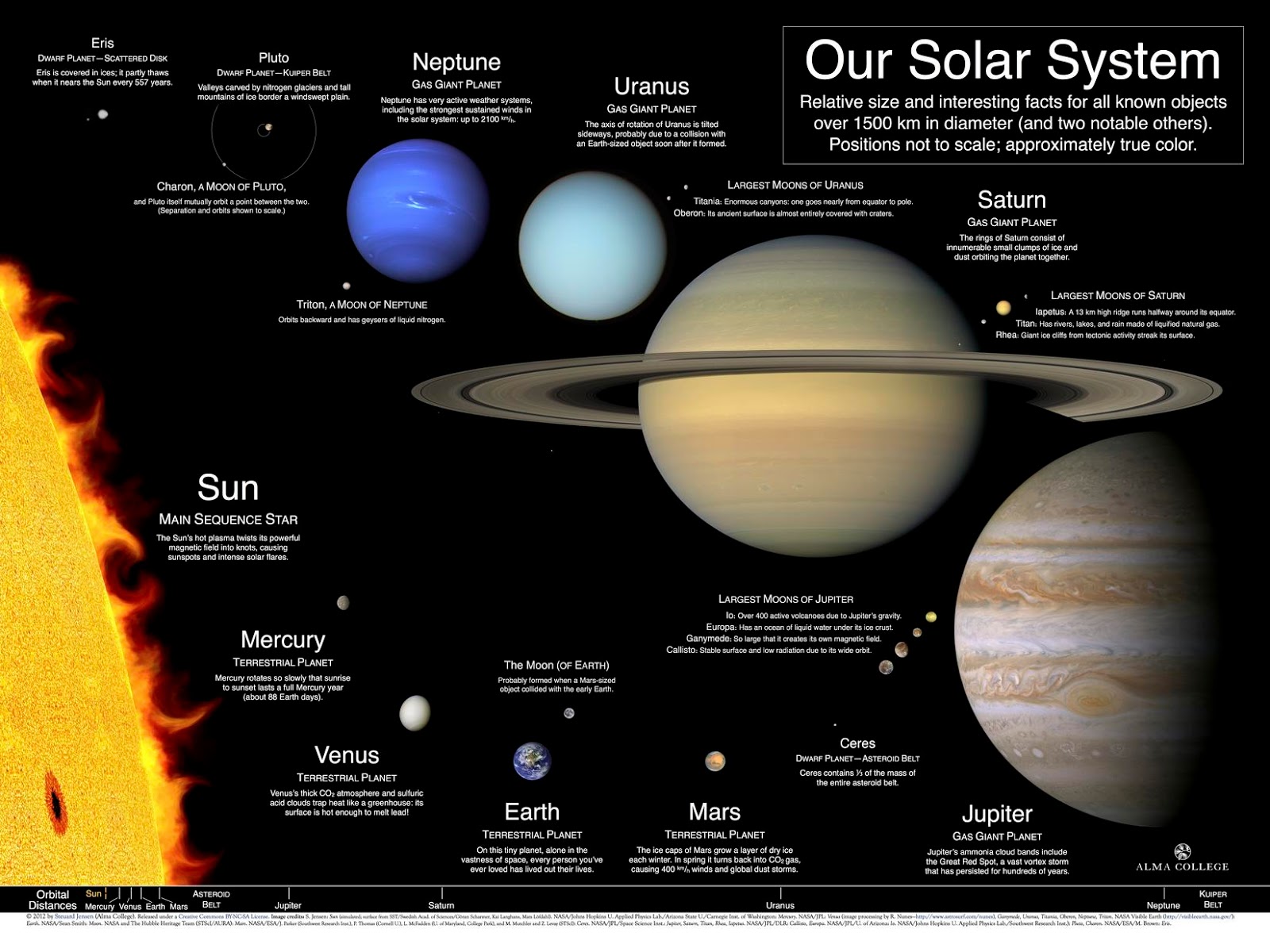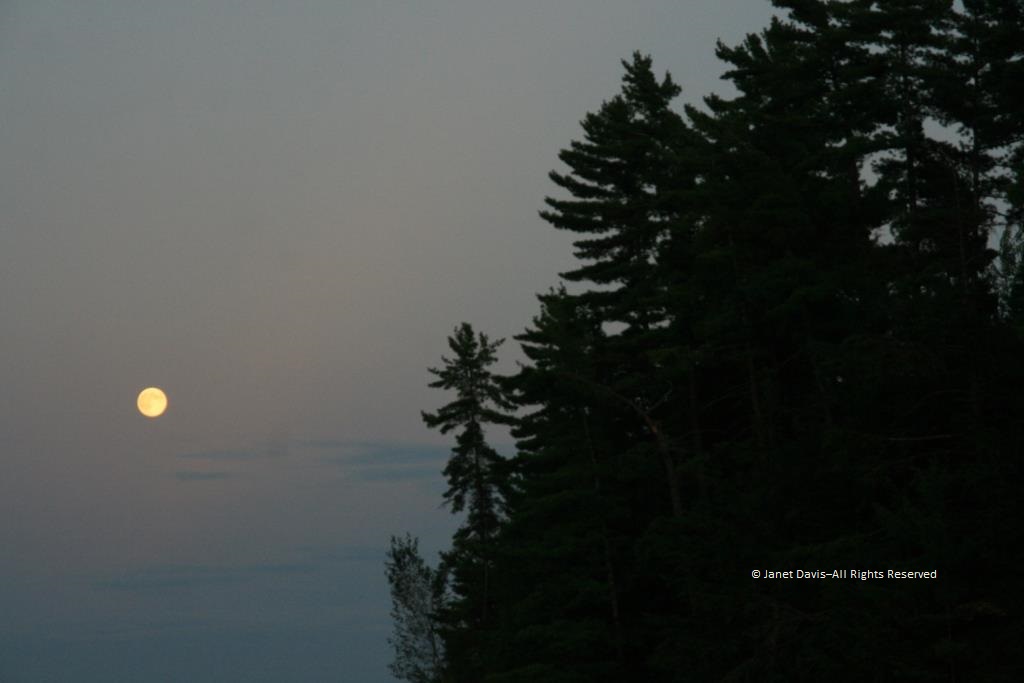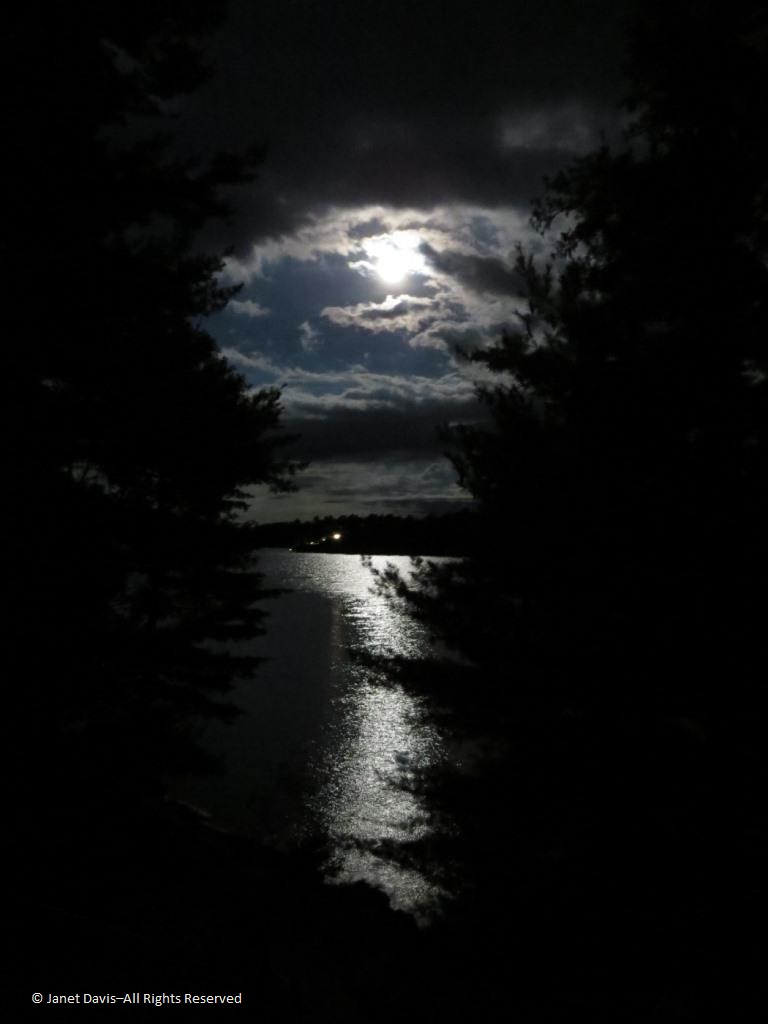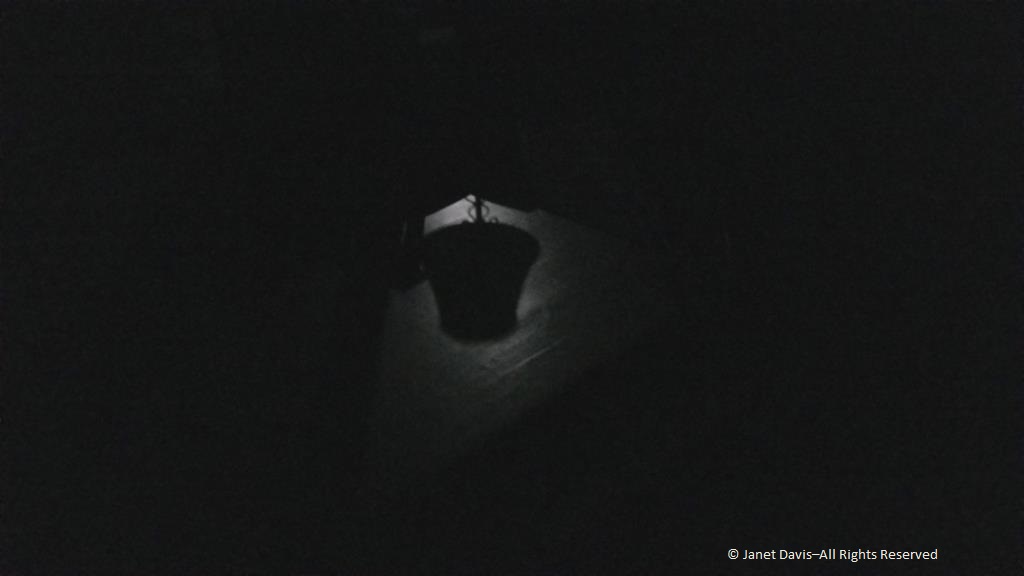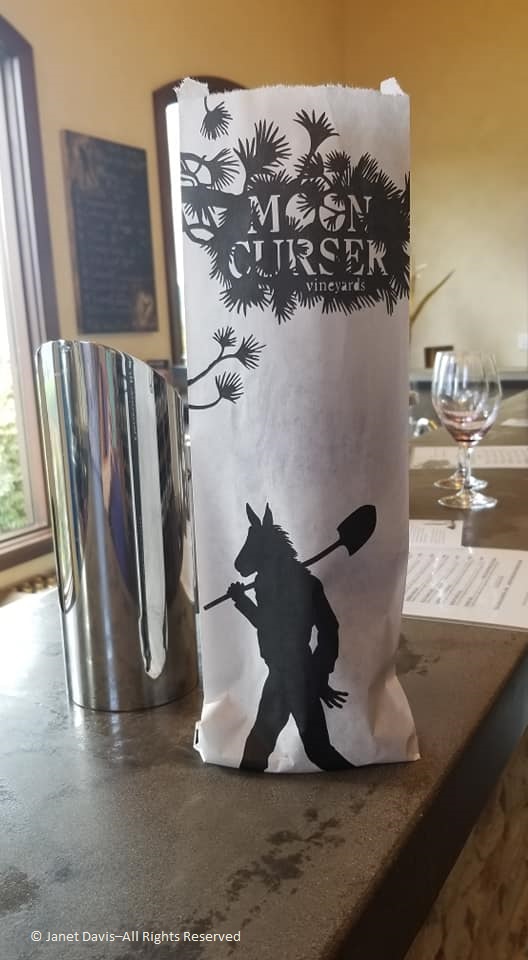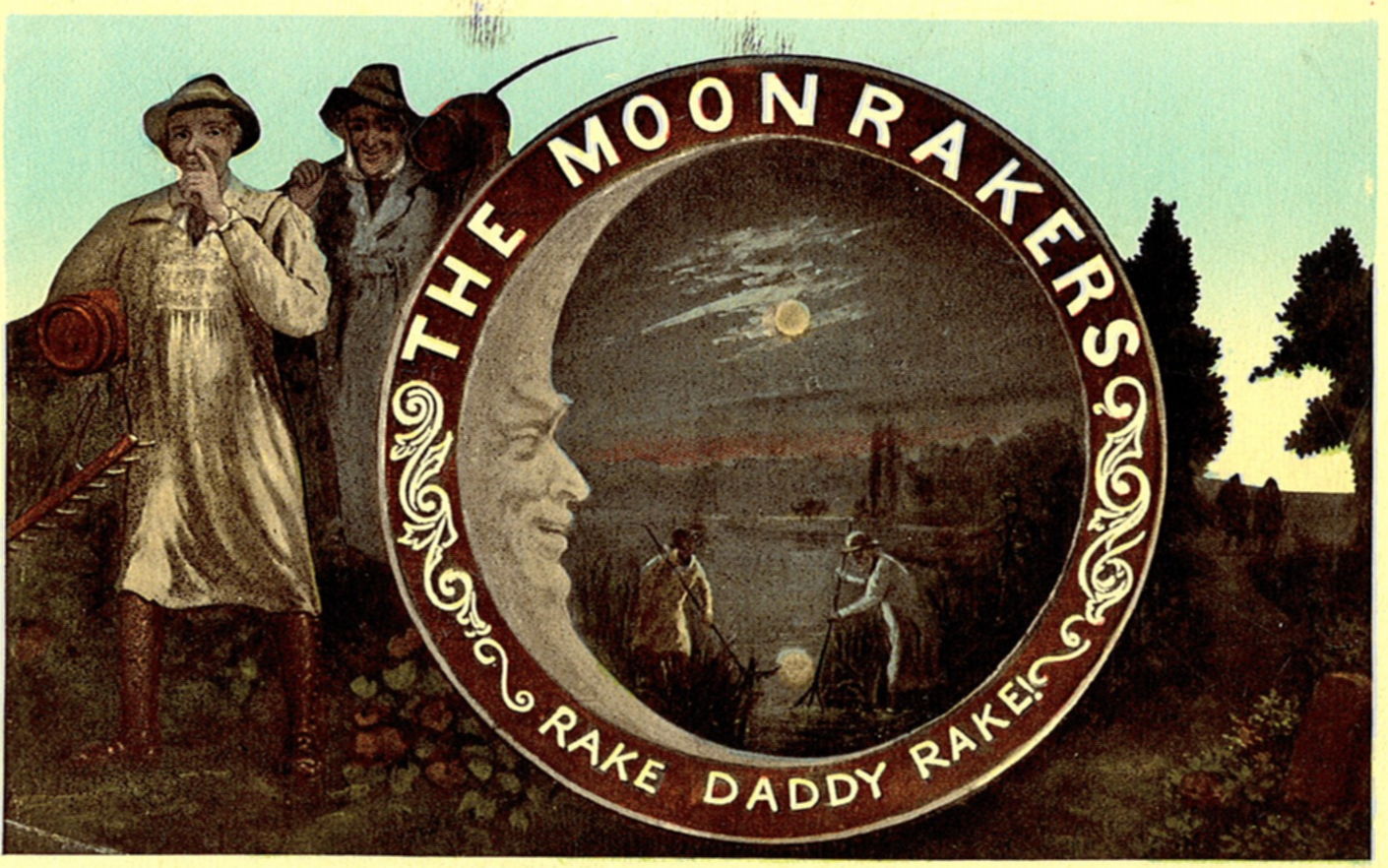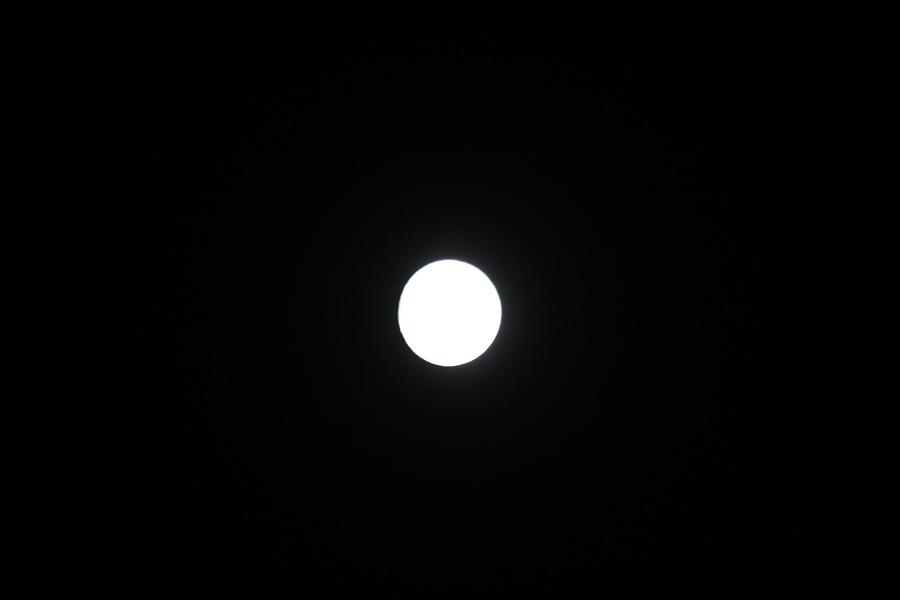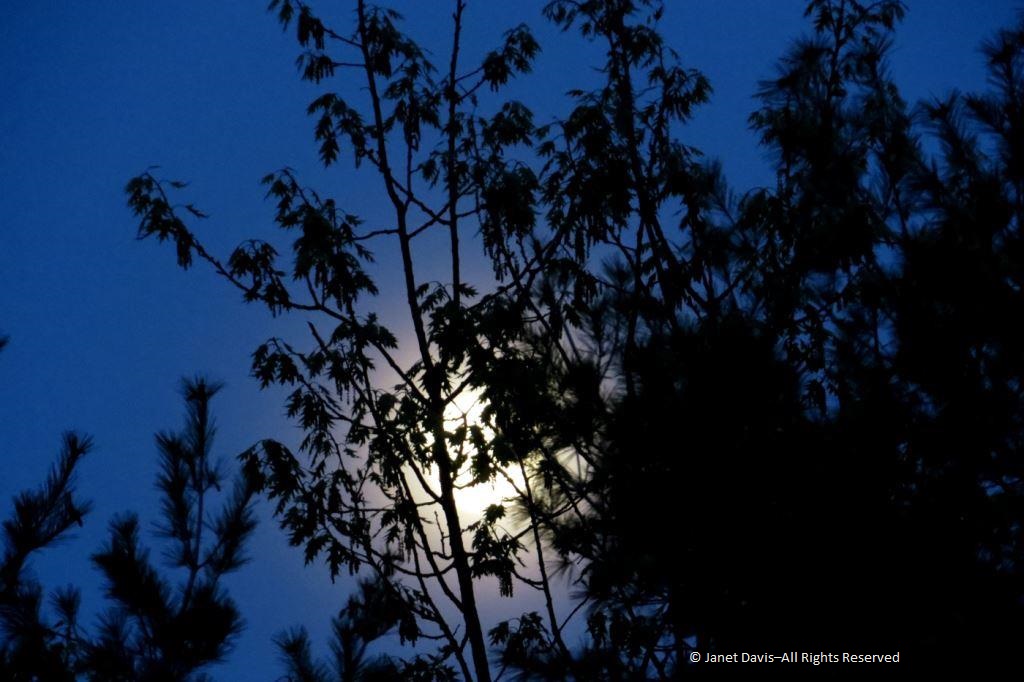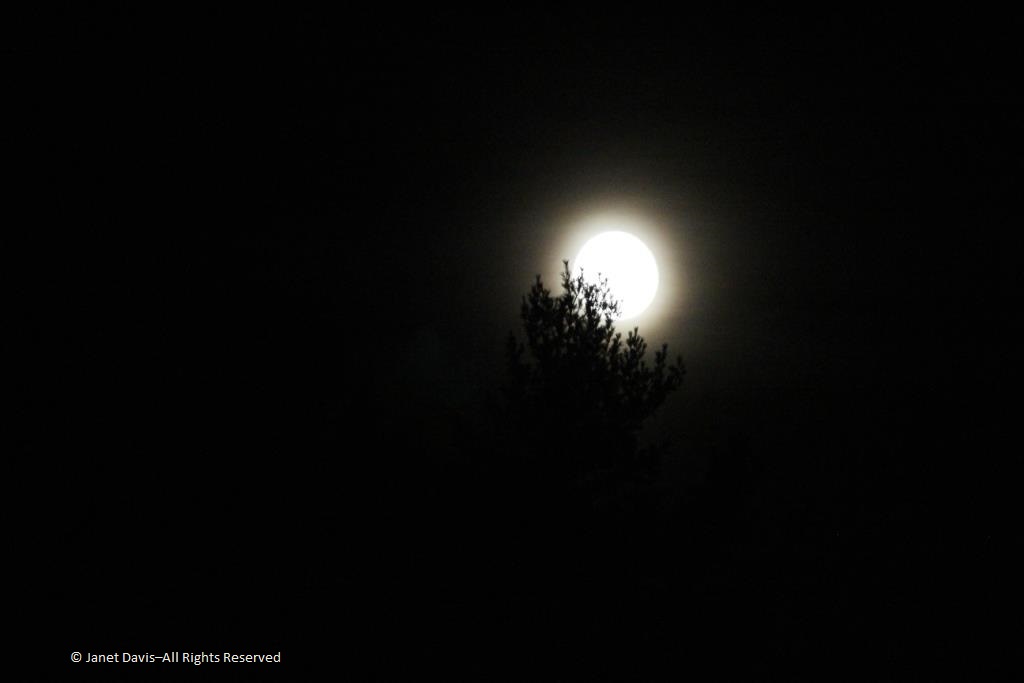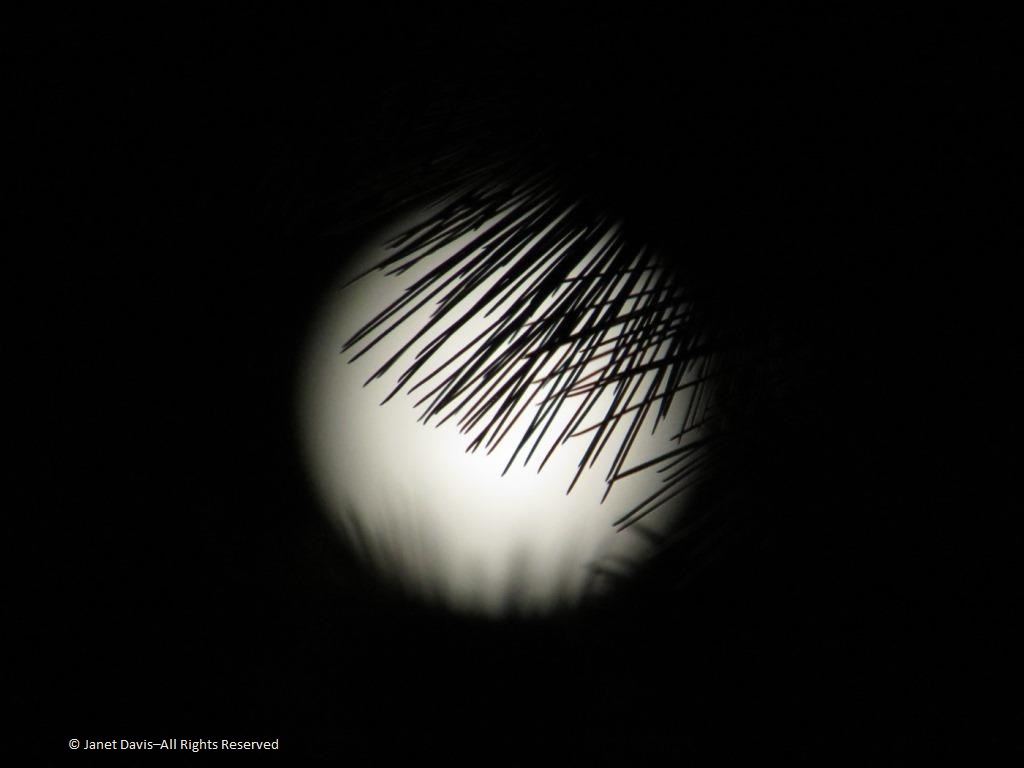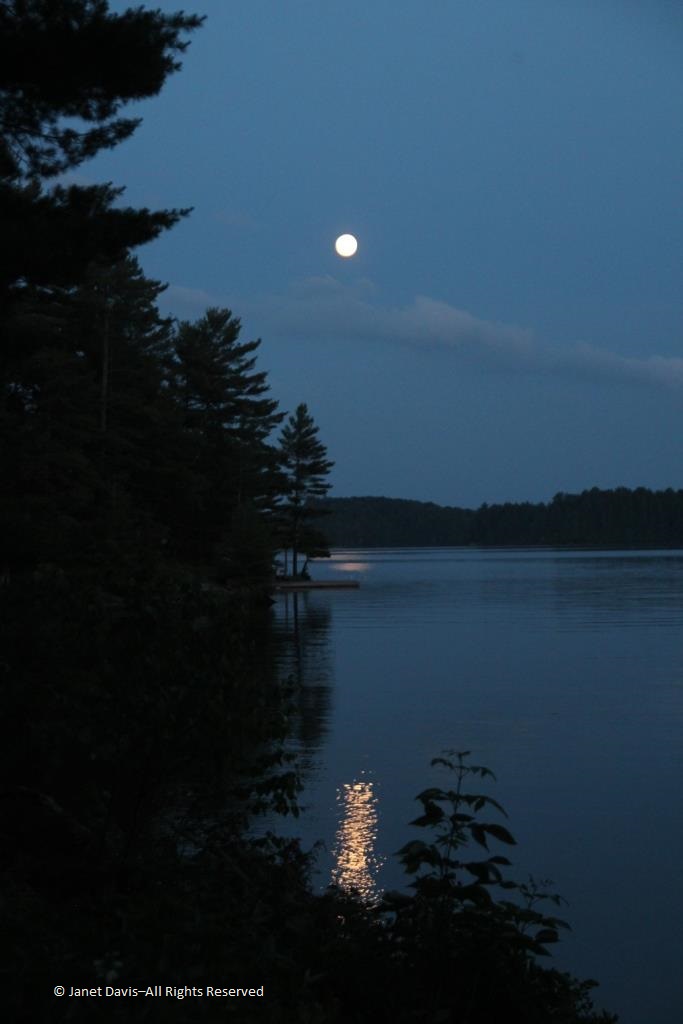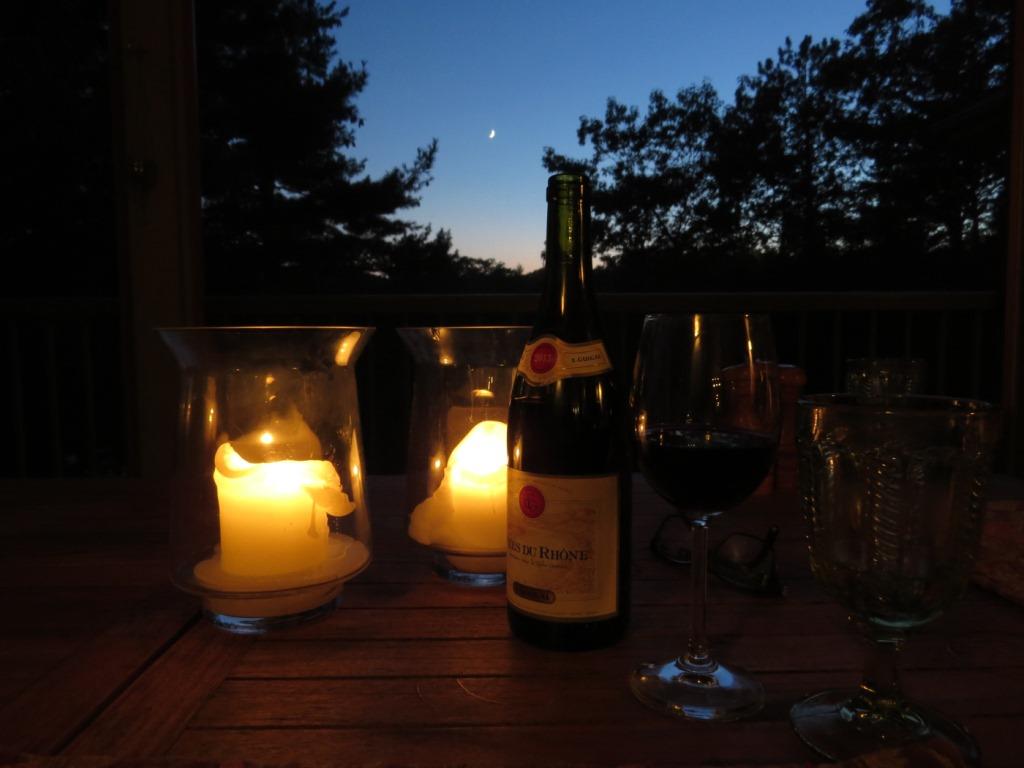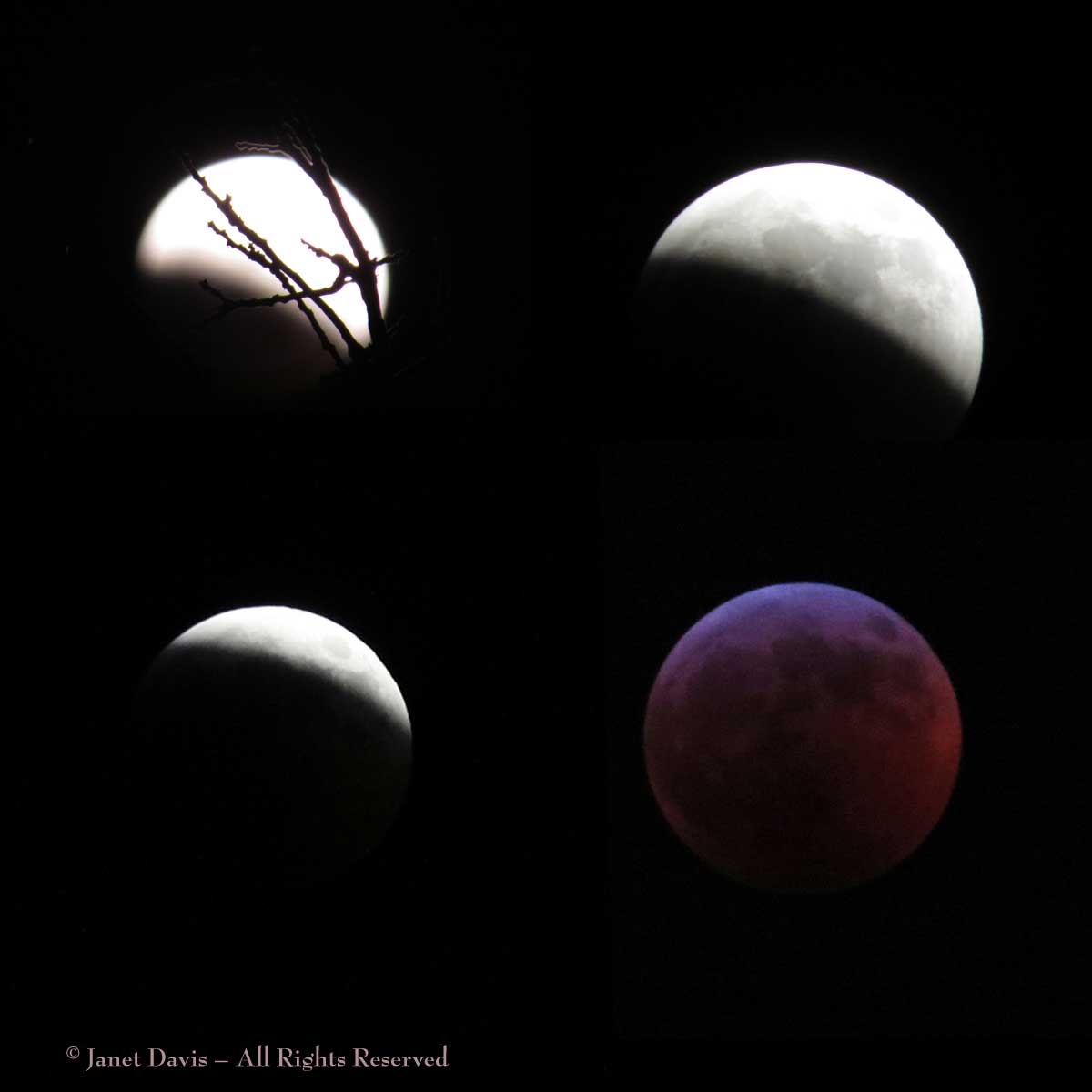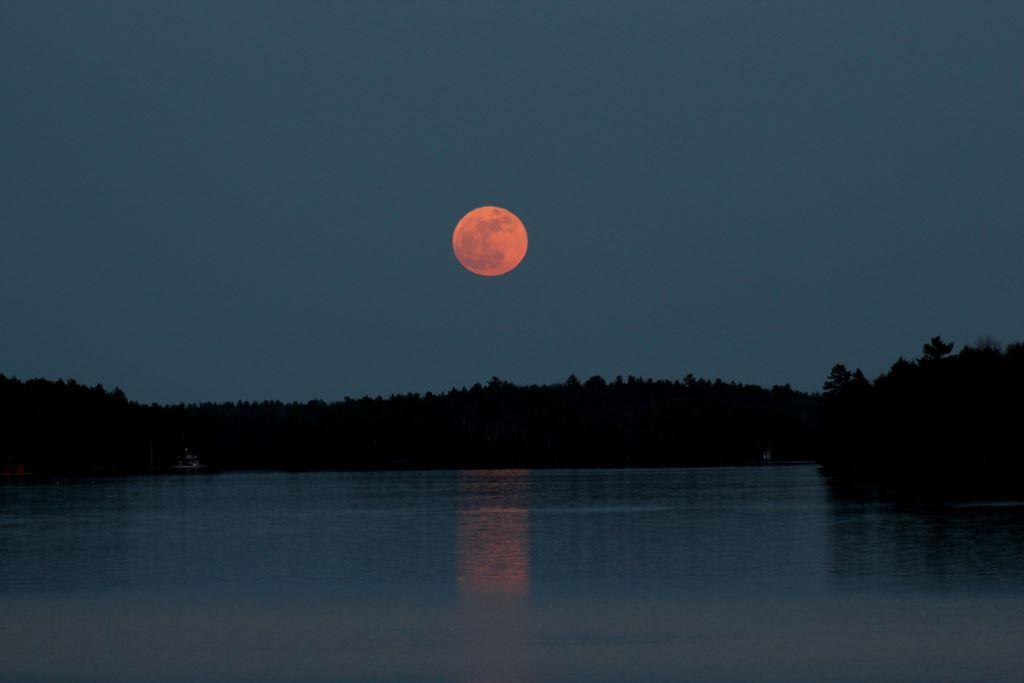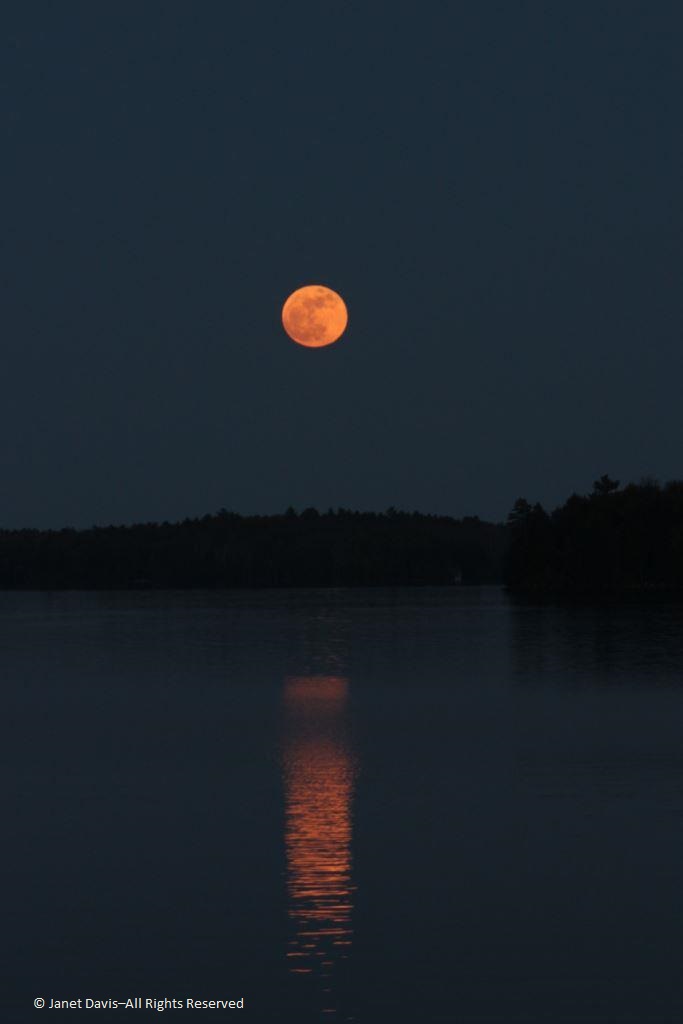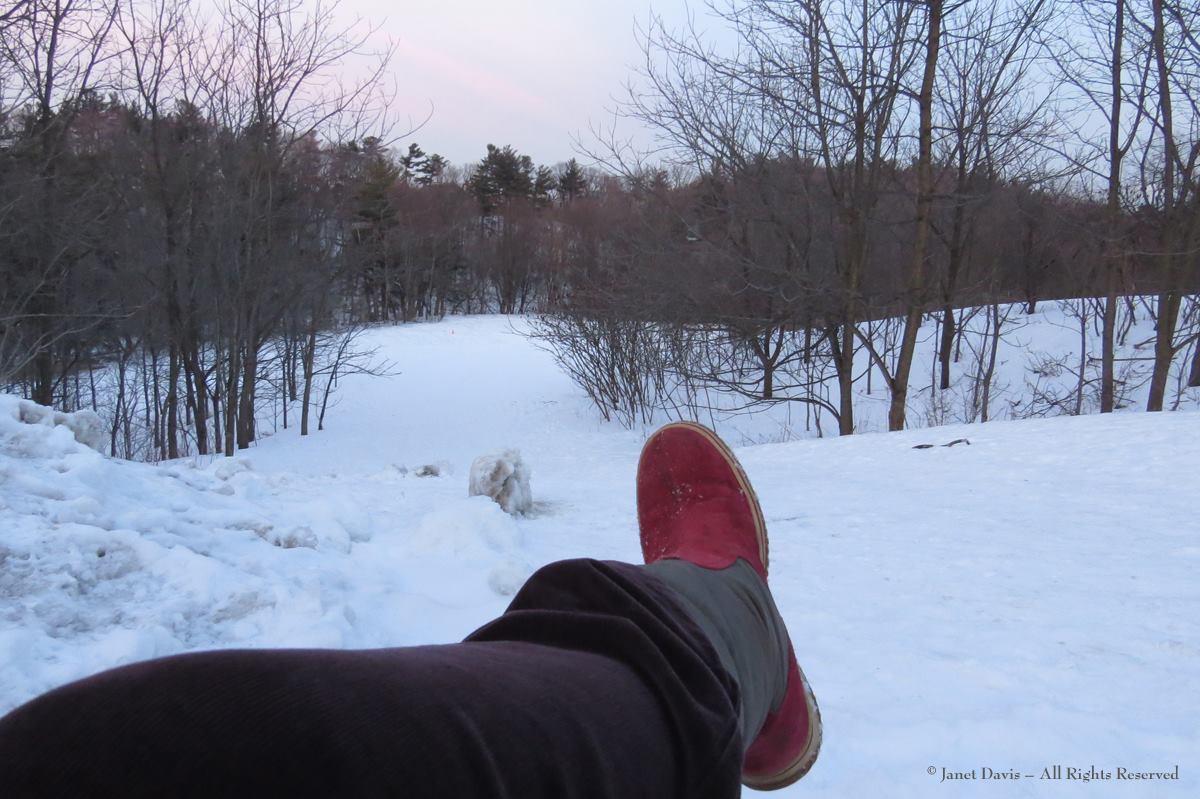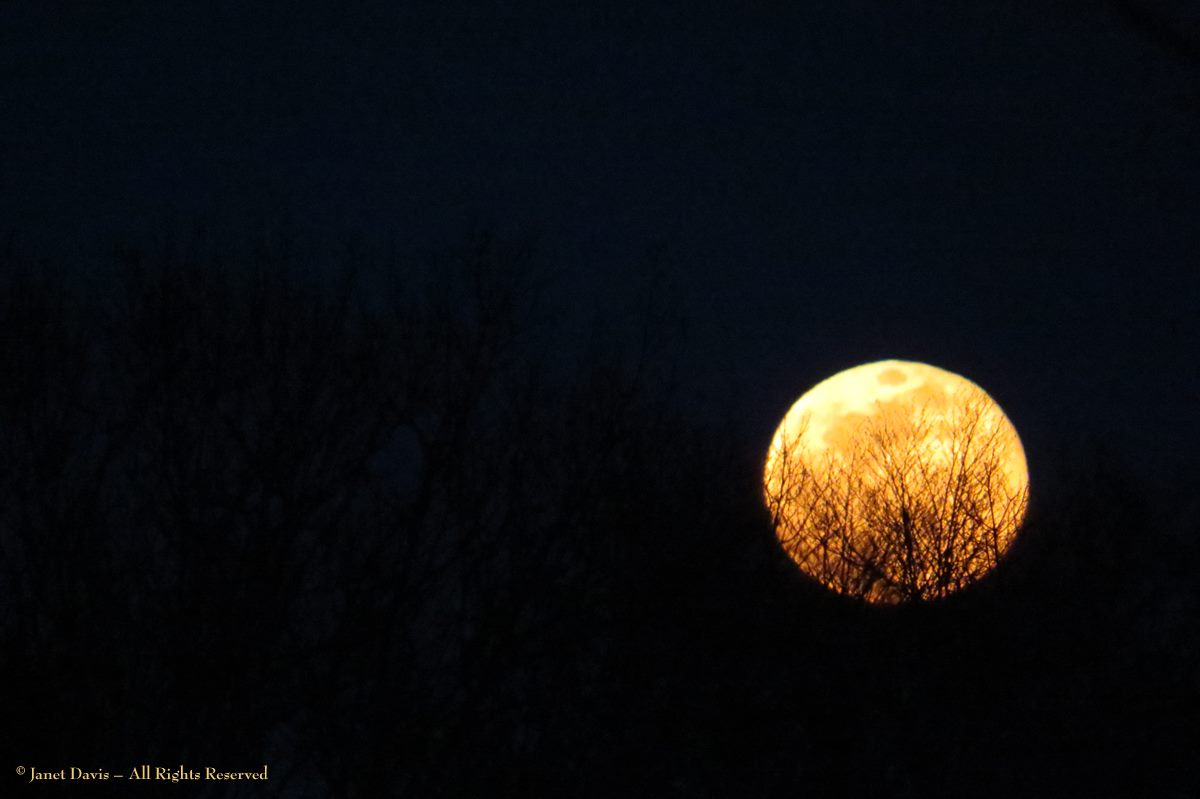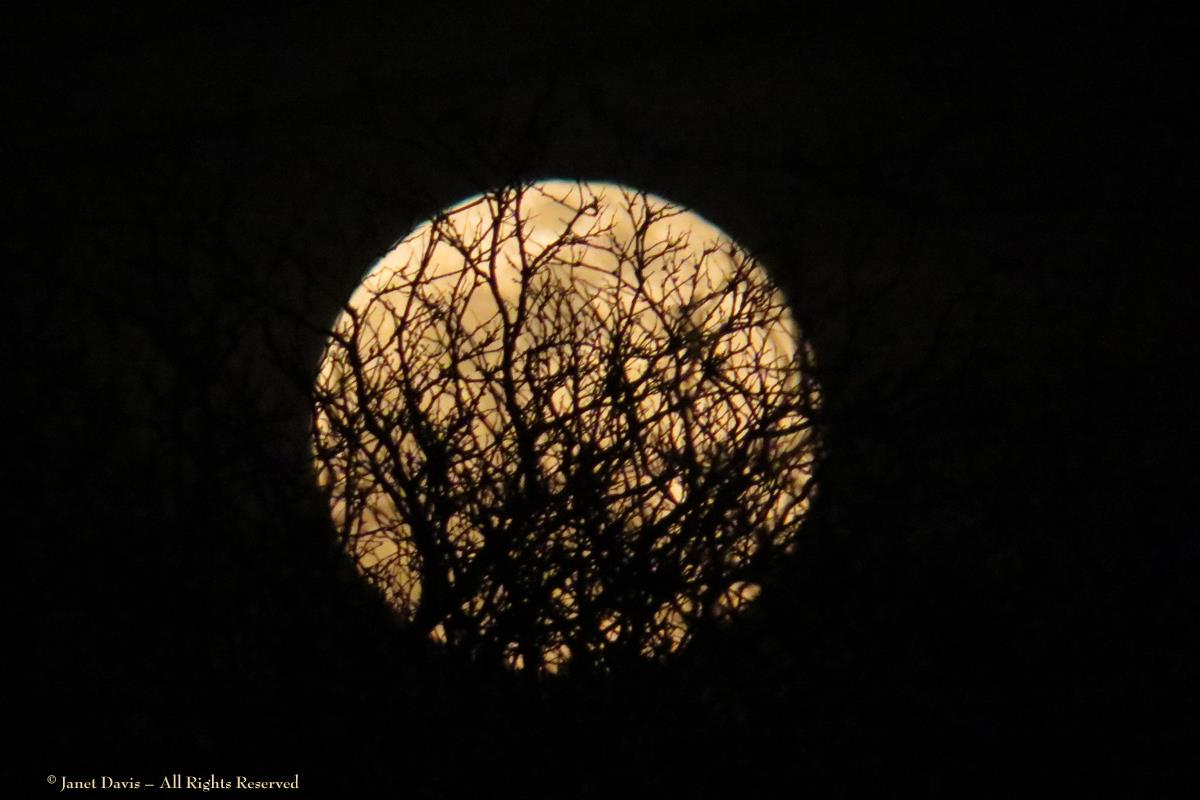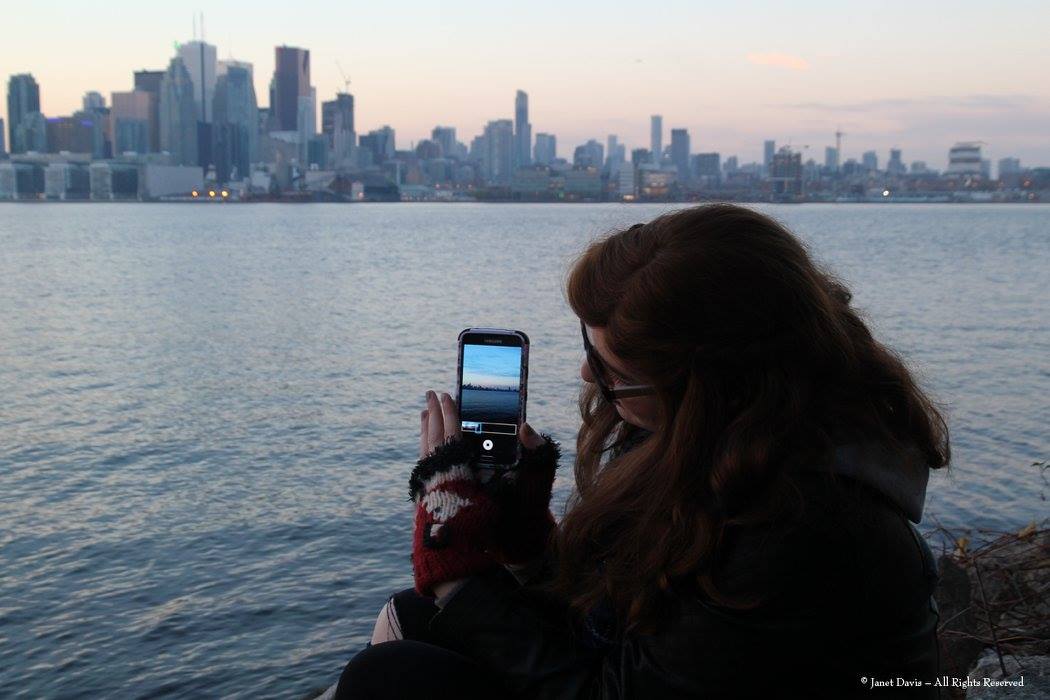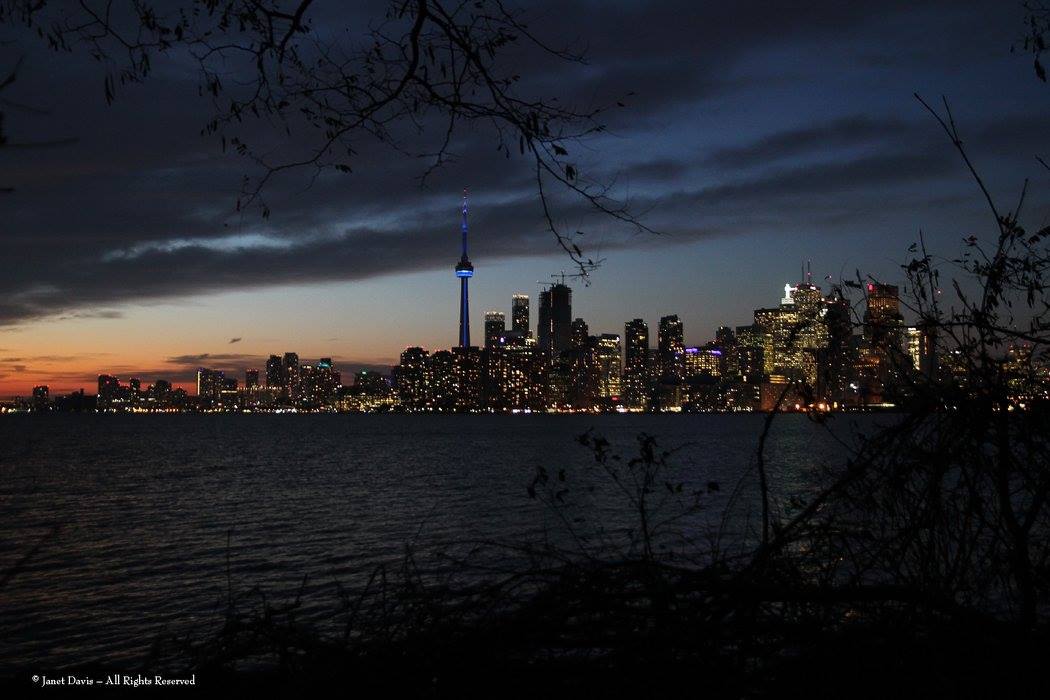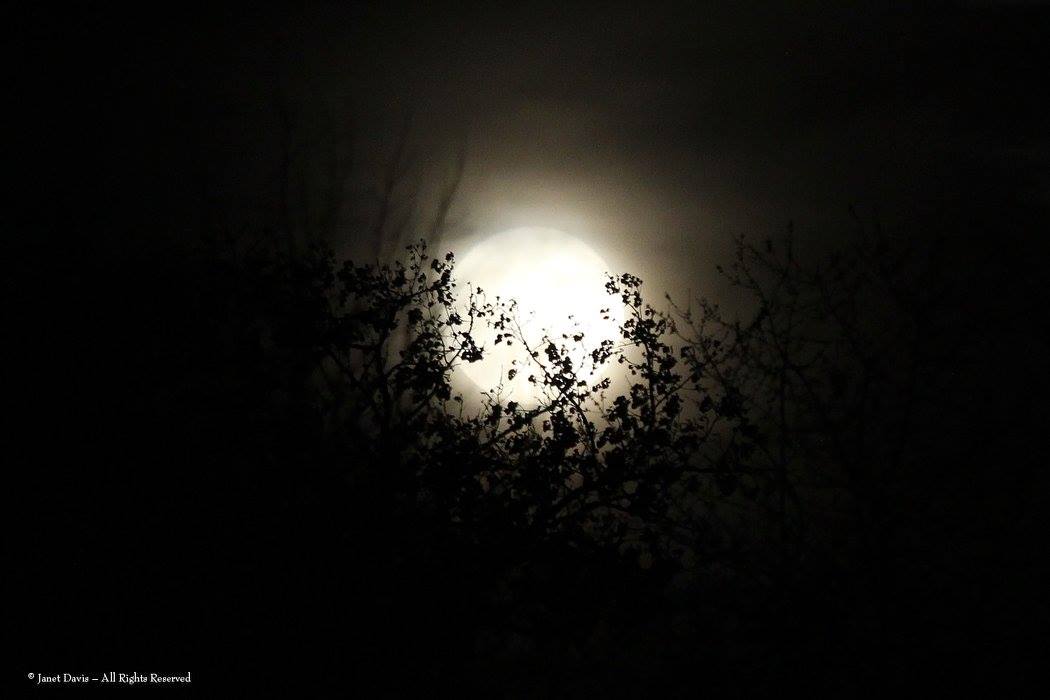My Night in the City
My favourite night photography session happened because of a full moon. A “Supermoon”, that is, if you’re trying to sell the concept as an advertising ploy, instead of a very normal celestial occurrence during which the full moon comes to within 90 percent of its closest approach to earth, as measured from their respective centres. Anyway, it was November 14, 2016, and I was on a 4:15 pm ferry from Harbourfront to Ward’s Island, a sandy, somewhat bohemian enclave in Lake Ontario just a 20-minute sail away from downtown Toronto.
It was still light when we pulled up to the Ward’s Island dock.
I was there to photograph the supermoon which I strangely believed, without researching, would rise like a golden balloon over the skyscrapers of the city to the north. I found a spot on a smooth rock on the island’s wildish north shore. It was cold. On a rock beside me sat a young Irish girl named Cheryl, in Canada on a temporary work visa and living with her “brudder”. She fielded a call from him as we sat watching the sky; he was wondering when she’d be home for dinner. “I told ya, I’m out to see the moon!”
And there we waited, two moonstruck women watching the sun set in the west….
…. as geese flew by….
…. and the ferry headed back to town with the vestiges of sunset splashed across the sky.
The sky darkened, the air got colder and I regretted not adding a second layer…..
…. as Porter airplanes flew past the CN Tower homing in on the airport on Centre Island nearby.
Soon the sky was black velvet and the lights twinkled in the financial buildings downtown, a mile or two south of Yorkville, the scene of Joni Mitchell’s Night in the City. It was night in the city, but still no supermoon.
Cheryl and I decided we’d had enough. Clearly we’d missed the moonrise or it had climbed unseen behind some bank of cloud. Disappointed, we said our goodbyes and I wandered slowly along the lit island pathway towards the ferry dock. By chance I gazed up and there was my moon, hazy and framed by a verdant tracery of autumn leaves still hanging onto a tree. It was not a supermoon; it was just my faithful moon, bathing with its glow this cold November night in the city.
Joni’s Night in the City
I met Joni Mitchell once. It was 1996 and Joni was already standing in the elevator I entered at the Bessborough Hotel in Saskatoon, the city of my birth. My family and I were staying there while attending a Campbell family reunion to celebrate my Irish-born grandfather’s arrival in Canada eighty-five years earlier. Though Joni was born in Alberta, her family settled in Saskatoon when she was 11 years old, so this was her childhood home. There was a man with her – well, there was always a man with Joni. Given her towering reputation in song, she was shorter than I thought she’d be, just 5’5”. As the floor numbers lit up on the descent, I succumbed to my inner fangirl and said: “Joni, I’ve always loved ‘Night in the City’. It was on one of the first albums I owned.” She replied, in a voice made husky by decades of smoking: “Oh, I leave those songs to the young voices now.” On this day, as I recall, she was heading out on a bike to ride along the Saskatchewan River and we smiled at each other as we left the elevator and went our separate ways.
But Joni had her young, soaring voice back in 1967 when she recorded her first album, Song to a Seagull, released in 1968 That year I was in my first apartment in New Westminster, just outside Vancouver. I had a job and a roommate named Jean from work. An older woman, she came from Yorkshire and when she’d had a little too much to drink, she’d say with a thick Midlands accent: “Aye, be gum. It’s champion!” I had the Seabreeze record player I’d brought with me from my family home and Joni’s album, with her fantastical art on the cover, played on it constantly. It was a 2-part LP, a concept album; one disk was titled “I Came to the City”, about Canada, the other “Out of the City and Down to the Seaside”, about California. And all those songs were like poems to my ear. In fact, Joni dedicated it to her 7th grade English teacher Mr. Kratzman “who taught me to love words”.
The album cover is actually an interesting story. When the sleeve was first printed and packaged by Reprise Records on the album that was going to be titled simply Joni Mitchell, they didn’t notice that Joni had painted a message in flying seagulls and they cut off the last “L” in “Seagull”. You can see it on older versions of the album, below. When the mistake was noticed, the album cover was reprinted and the album was re-released with a new title.
Joni’s song ‘Night in the City’ was born in Toronto’s Yorkville neighbourhood. Though it’s all chic boutiques and restaurants today, in the late 1960s it was a place of coffeehouses and hippies and counterculture: Canada’s Greenwich Village and Haight-Ashbury rolled into one. In 1968 Joni sang at The Riverboat, 134 Yorkville Avenue. The cover charge was $1.75 to get into a club that hosted folk icons like Odetta, Simon & Garfunkel, James Taylor, Richie Havens and home-grown talent like Ian & Sylvia, Gordon Lightfoot, Neil Young and Kris Kristofferson. It would close ten years later, on June 25, 1978, with the concert of Toronto folksinger Murray McLauchlan, below.
Coincidentally, I saw Murray McLauchlan sing exactly 40 years later at a little club near our summer cottage on Lake Muskoka. He’s on guitar at left, with Toronto singer-songwriter Marc Jordan (‘Living in Marina del Rey’) on guitar in the centre. They are part of a foursome called Lunch at Allen’s with Cindy Church and Ian Thomas.
Joni, who cut her entertainment teeth in Yorkville with her first husband, folksinger Chuck Mitchell, wrote about the scene there and how she came to write ‘Night in the City’:
“So one night I decided I was going to go down, I was going to be very broad-minded, I was going to enjoy myself, I wasn’t going to pay any attention to any of the wise-cracks I got from people as I walked down the street. I was just gonna walk down and groove. And so I did and I stood in front of all of the buildings, like they have about 6 or 7 or 8 – more than that – on Yorkville Avenue proper of music spots like this that showcase everything from good folk music to bad folk music to good rock n roll to bad rock n roll to good jazz to bad jazz. You can stand out in front of the clubs in what I like to call music puddles – it’s the area where the music just kind of hangs and you can walk over that far and you’re out of the range of it again. So that’s what I did and I came home, climbed up the stairs to the place where I was staying and wrote this song, called Night in the City.”
Night in the City
Light up light up
Light up your lazy blue eyes
Moon’s up nights up
Taking the town by surprise
Night time night time
Day left an hour ago
City light time
Must you get ready so slow
There are places to come from
and places to go
Night in the city looks pretty to me
Night in the city looks fine
Music comes spilling out into the street
Colors go flashing in time
Take off take off
Take off your stay-at-home shoes
Break off shake off
Chase off those stay-at-home blues
Stairway stairway
Down to the crowds in the street
They go their way
Looking for faces to greet
But we run on laughing with no one to meet
Night in the city looks pretty to me
Night in the city looks fine
Music comes spilling out into the street
Colors go waltzing in time © 1966 Gandalf Publishing Co.
The album was produced by David Crosby (later of Buffalo Springfield and Crosby Stills Nash and Young). He would say: “The strongest thing I did for Joni as a producer on Song to a Seagull, from 1968, was keep everybody else off of that record. She was a folkie who had learned to play what they call an indicated arrangement, where you are like a band in the way you approach a chord and string the melody along. She was so new and fresh with how she approached it. It’s the reason I fell in love with her music. She was a fantastic rhythm player and growing so fast. She had mastered the idea that she could tune the guitar any way she wanted, to get other inversions of the chords. I was doing that too, but she went further. I understood her joy in using bigger tools later – jazz bands, orchestra. But the stuff she did that was basically her, like 1971’s Blue, was her strongest stuff. Match her and Bob Dylan up as poets, and they are in the same ballpark. But she was a much more sophisticated musician.”
Now listen to the young voice of Joni Mitchell… actually two voices, both hers, singing harmony in rounds. And hear 22-year old Stephen Stills playing a very strong bass. As Joni said: “He came up with a beautiful bass line that I just couldn’t deny.” And if you like, do sing along with me on some beautiful night in the city.
******
The blog above is a bit of an experiment for me, the product of a restless mind and a love of photography and music. I decided that 2020 would feature some blogs that combine my photos (not always of gardens or flora) with a little bit of memoir-ish trivia topped with a You Tube video of a favourite – and related – song from the era. I’ve called them #mysongscapes. If you like the idea, please drop a note below and I’ll do some more. But don’t worry. I will include lots of garden blogs in 2020 as well. Happy New Year!
Postscript: Here are the other song blogs in this series:
- Paul Simon’s ‘Kodachrome’ and my life in photography;
- Vietnam and Songs of Protest;
- Galway Bay and memories of my grandfather and Ireland;
- Simon and Garfunkel’s Parsley, Sage, Rosemary and Thyme;
- The John Denver lullaby I sang to my first grandchild, Today While the Blossoms Still Cling to the Vine.
- Gordon Lightfoot for a Snow Day
- Madame George by Van Morrison – my favourite song in the world
- Brown Eyed Girl(s) – Van Morrison’s classic and my black-eyed susans
- Raindrops – on flowers and in my gardens
- Miss Rumphius and the Lupines
- Bring me Little Water – on water in the garden
- Amsterdam… Spring Sunshine – a Dutch travelogue and a brilliant Broadway play
- Both Sides Now – a reflection on clouds and Joni Mitchell
- Crimson & Clover and Other Legumes – a love letter to the pea family, Fabaceae
- Mexico – James Taylor serenades in my travelogue of a decade of trips to Mexico
- Crystal Blue Persuasion – blue flowers in the garden
- My Bonny – remembering the late Laura Smith (and my dad)
- Up on the Roof – a Carole King love-in and a lot of green roofs
- Singing Malaika in the Serengeti
- That Morning Sun – Our Constant Star – spring renewal and the voice of Melody Gardot.

